Which Camera Do Most Pro Fashion Photographers Use
Best professional camera 2022: the fourteen best workhorses for pro creators
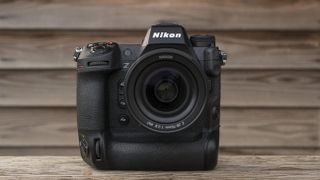
Looking for the best professional camera you can buy? Choosing the right tool for the task tin can be a tricky decision. Luckily, our buying guide is hither to help – from specialist tools to true all-rounders, we've tested all of the top professional camera models. So whether you shoot sports, weddings or a whole range of subjects, this list will help you find the right camera.
What's the best professional person camera you can purchase in 2022? Choosing one choice is difficult, because needs differ from pro to pro. That said, our meridian pick for most paid snappers is currently the Nikon Z9. It's the most powerful flagship hybrid we've tested, combining 45.7MP stills, speedy burst shooting and 8K/30p video. Just it'southward not necessarily the all-time choice for everyone, specially with that price tag.
If you adopt the treatment of a DSLR, for case, the Canon EOS 1D X Marking Three is a true speed demon. Alternatively, the Canon EOS R3 puts the latest mirrorless tech in a DSLR-style shell, to produce the ultimate pick for sports and wildlife photographers.
If your clients demand the absolute best, your upkeep may be able to reflect that. For the pinnacle of pro-level performance, the Sony A1 is unbeatable. A remarkable camera with a remarkable price tag, information technology offers an unparalleled combination of speed and resolution, with super-fast autofocus and a 50.1MP full-frame sensor that records superb detail (and 8K video if you need).
Nearly of the cameras below are designed for superior stills performance. But if video is your staff of life and butter, we'd advise looking at the Sony A7S 3. Resolution tops out at 4K, merely that's because Sony chose to focus on getting it correct. That means limitless and reliable recording, with a comprehensive range of 10-bit 4K video frame rates (upwards to 120fps).
For those tempted past the unrivaled detail and epitome quality delivered past medium format cameras, we've also covered a few Fujifilm models which brand it available to the masses – including the aggressively-priced GFX100S, complete with 100MP sensor.
We keep our whole list regularly updated with the latest releases as we review them. Need some tips on how to reach a decision? Yous'll find useful buying advice at the bottom of this guide, explaining the key things to consider when choosing the correct camera for your professional requirements.
The all-time cameras for professionals 2022:
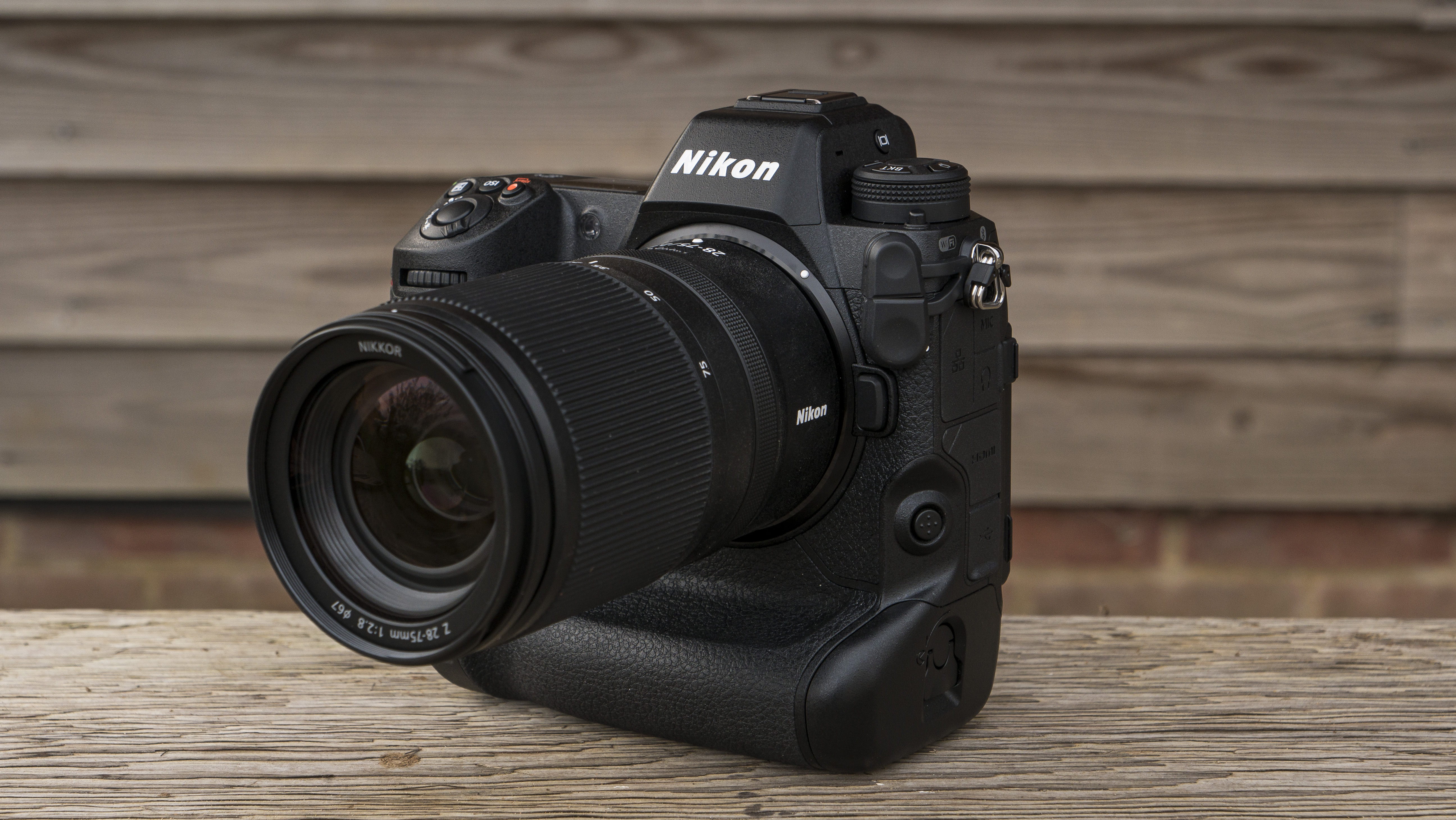
If you lot need a future-proofed hybrid camera that can shoot pretty much any subject, and capture 8K video, then the Nikon Z9 is the best you can buy. The Z9 is so futuristic, information technology doesn't even take a mechanical shutter – that's considering information technology's stacked 45.7MP sensor and Expeed seven processor are and so fast, it but doesn't demand one. That new tech provides a platform for the Z9's impressive shooting skills, from its ability to shoot total-resolution raws at 20fps to a much-improved autofocus organisation that draws it level with Canon and Sony.
While it's considerably bulkier than the Sony A1, the Nikon Z9 will experience comfortably familiar to anyone who's endemic a Nikon DSLR like the D5 or D850. It's no throwback, though – with the power to shoot 8K/30p video (and an 8K/60p fashion en road), it'due south one of the select few mirrorless cameras that can record at that lofty resolution. The Canon EOS R3 might vanquish it for summit outburst shooting speeds and we'll take to wait for a firmware upgrade to see internal ProRes 422 HQ recording, merely otherwise the Nikon Z9 is top dog for the professionals who tin can afford it.
- Read our in-depth Nikon Z9 review
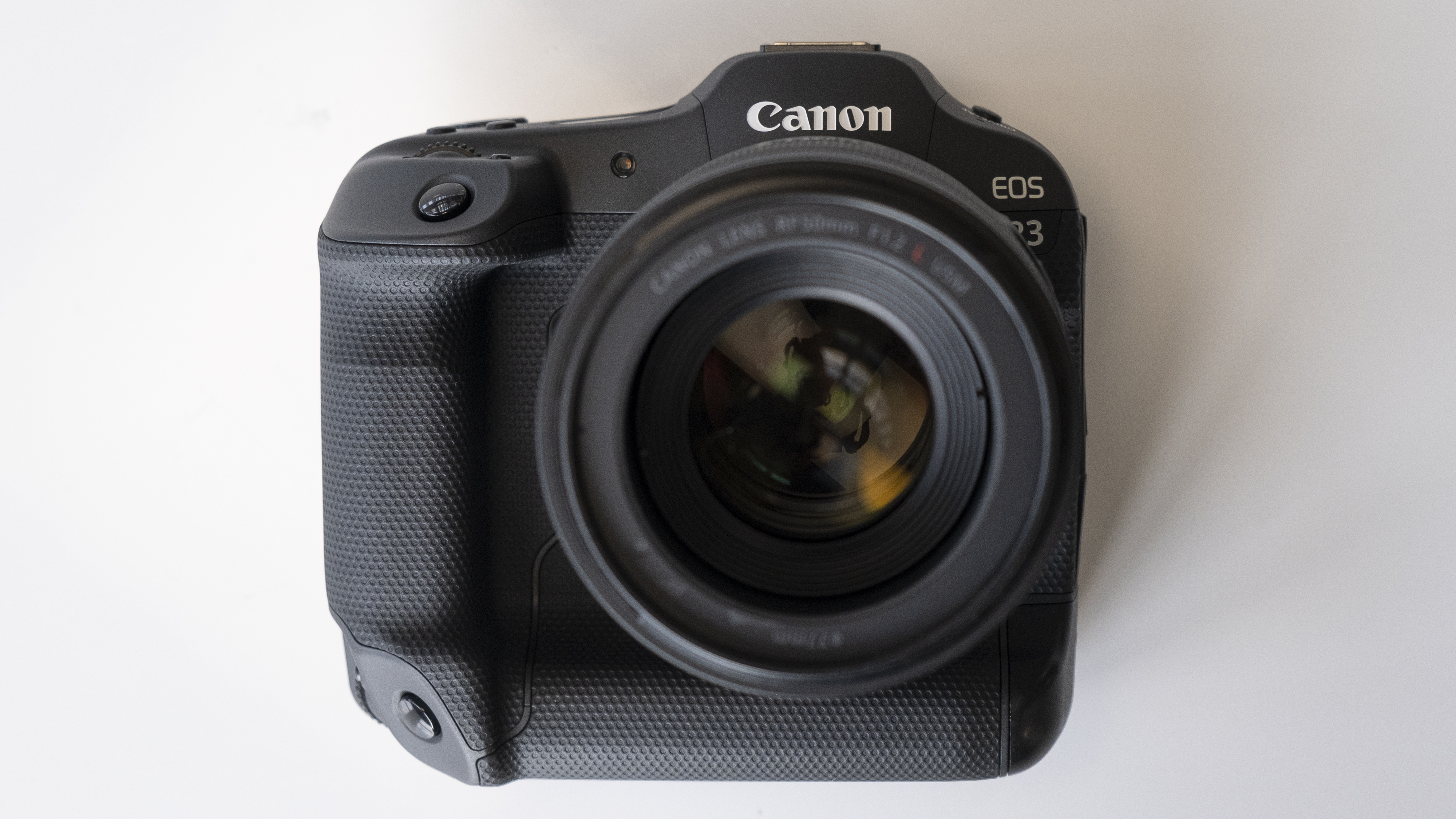
Don't be fooled by the old-school shell: this isn't a DSLR from a decade ago, just a cut-edge camera that represents the pinnacle of mirrorless operation in 2022. Combining the hybrid smarts of the EOS R5 with the chunky form factor of the 1D X Marking III, it features enough of innovations inside. The lower-resolution sensor volition limit its entreatment for some, but the stacked design delivers super-fast 30fps raw burst shooting.
Combined with enhanced AF tracking (including Centre Control AF, which follows your gaze through the viewfinder), that makes the EOS R3 a winner for wildlife and sports photographers. True to its hybrid design, the R3 also offers a solid video skill set: it tin capture 6K raw video internally at 60fps. A sharp articulating touchscreen is on hand for straightforward framing, while the control layout volition exist familiar to anyone who's shot with a pro Catechism DSLRs. Sony's A1 might trump it on sure specs, but nil else combines the traditional charms of a DSLR with side by side-gen mirrorless tech like the EOS R3.
- Read our in-depth Canon EOS R3 review
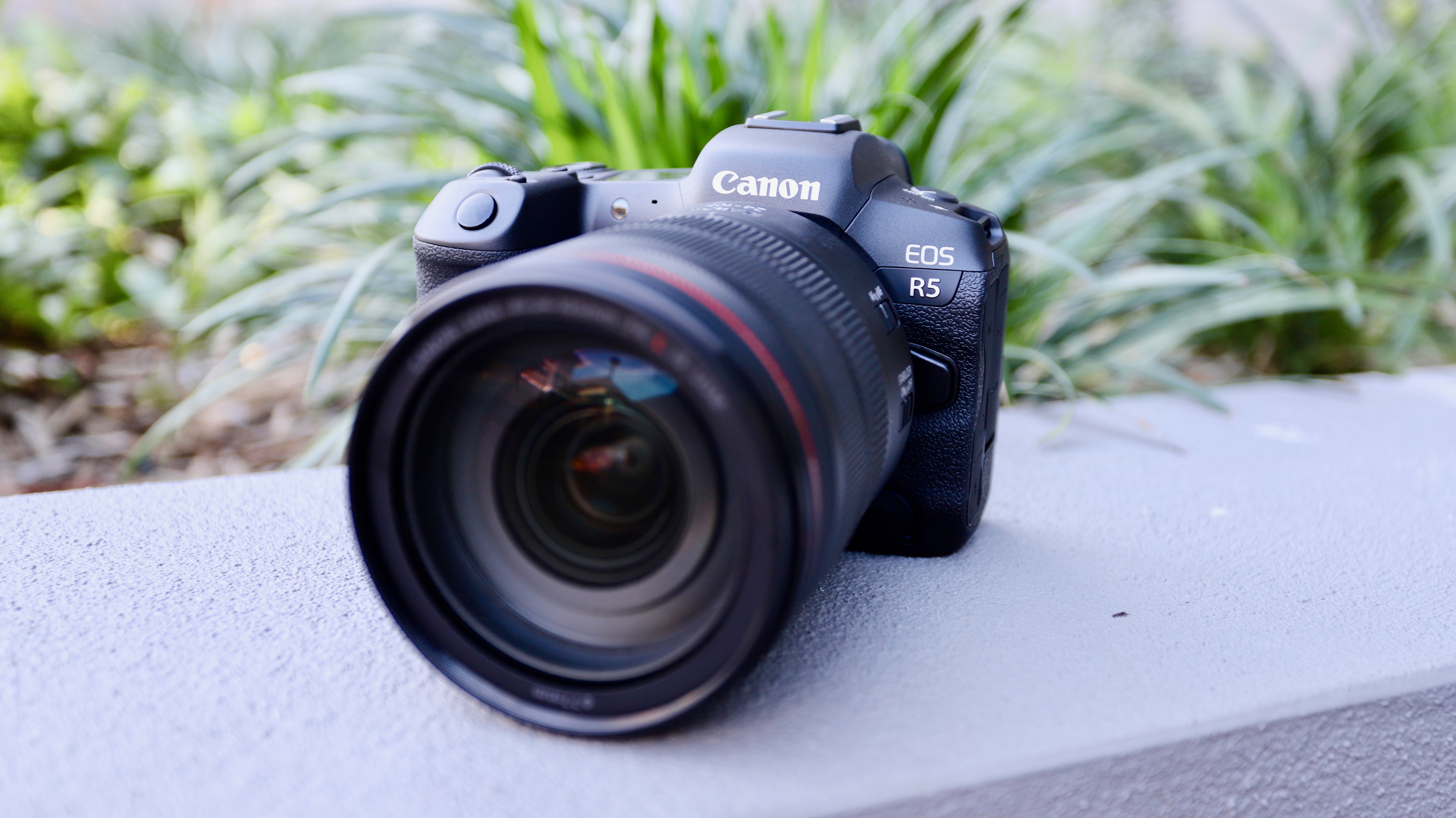
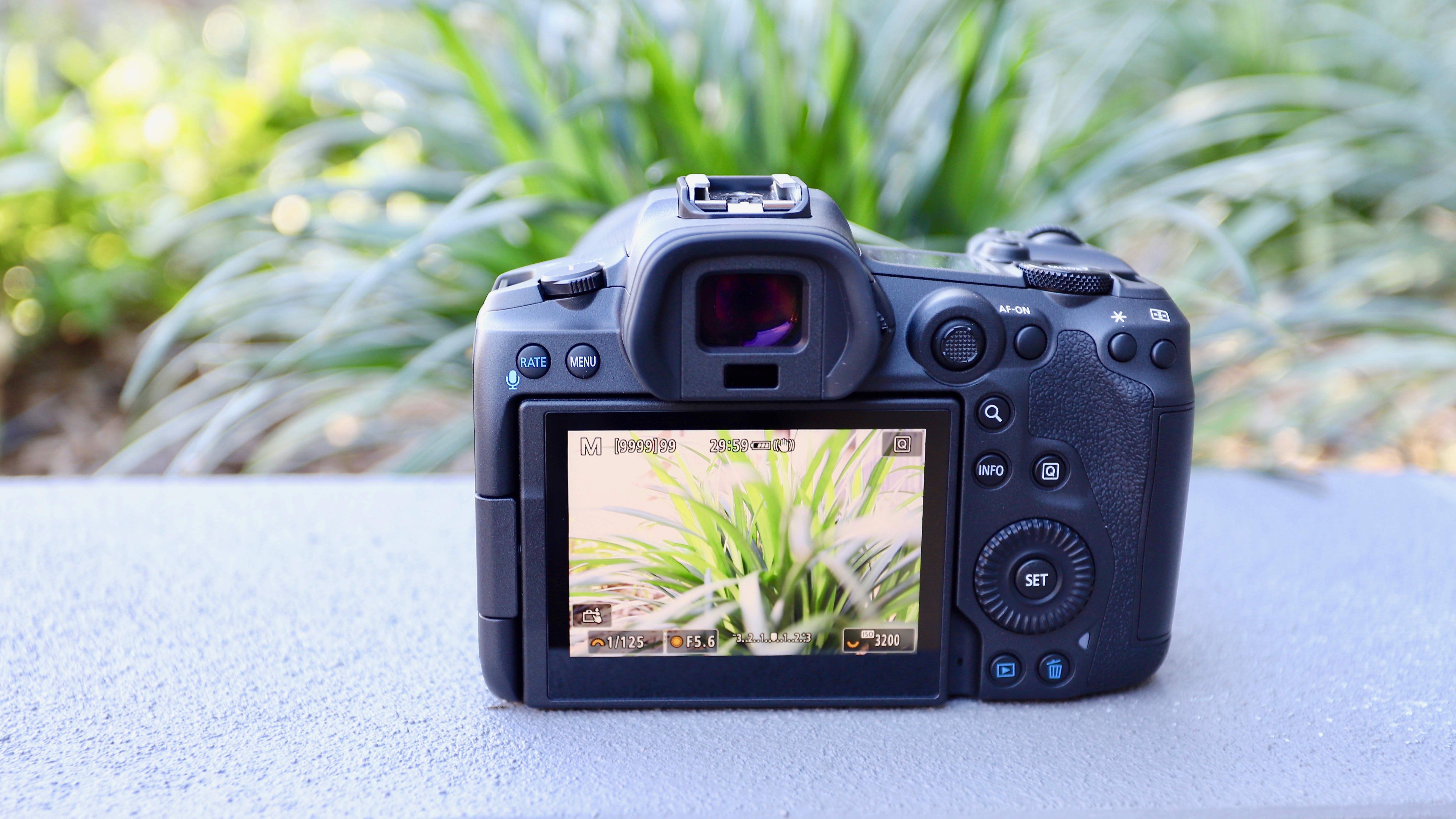
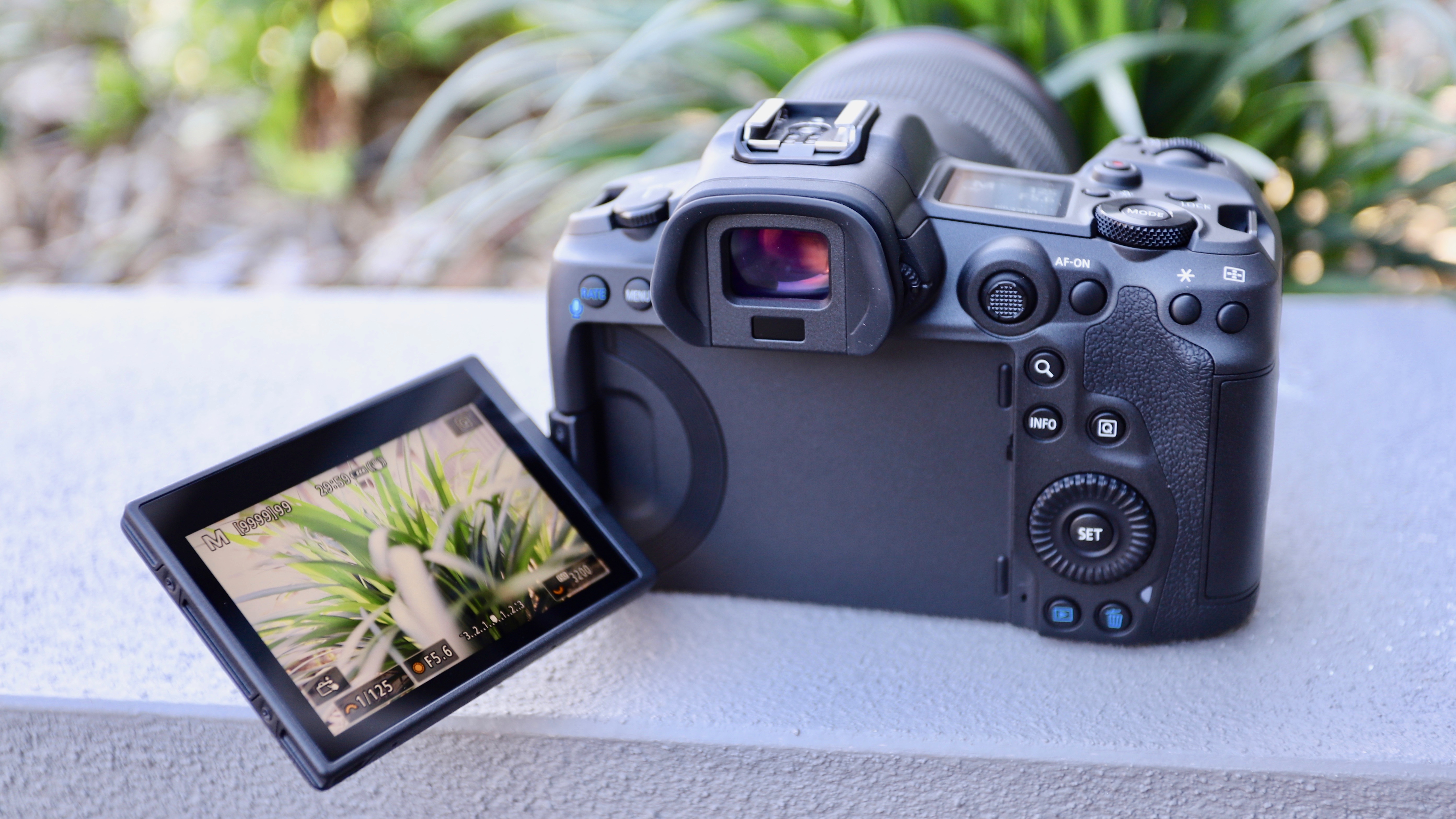
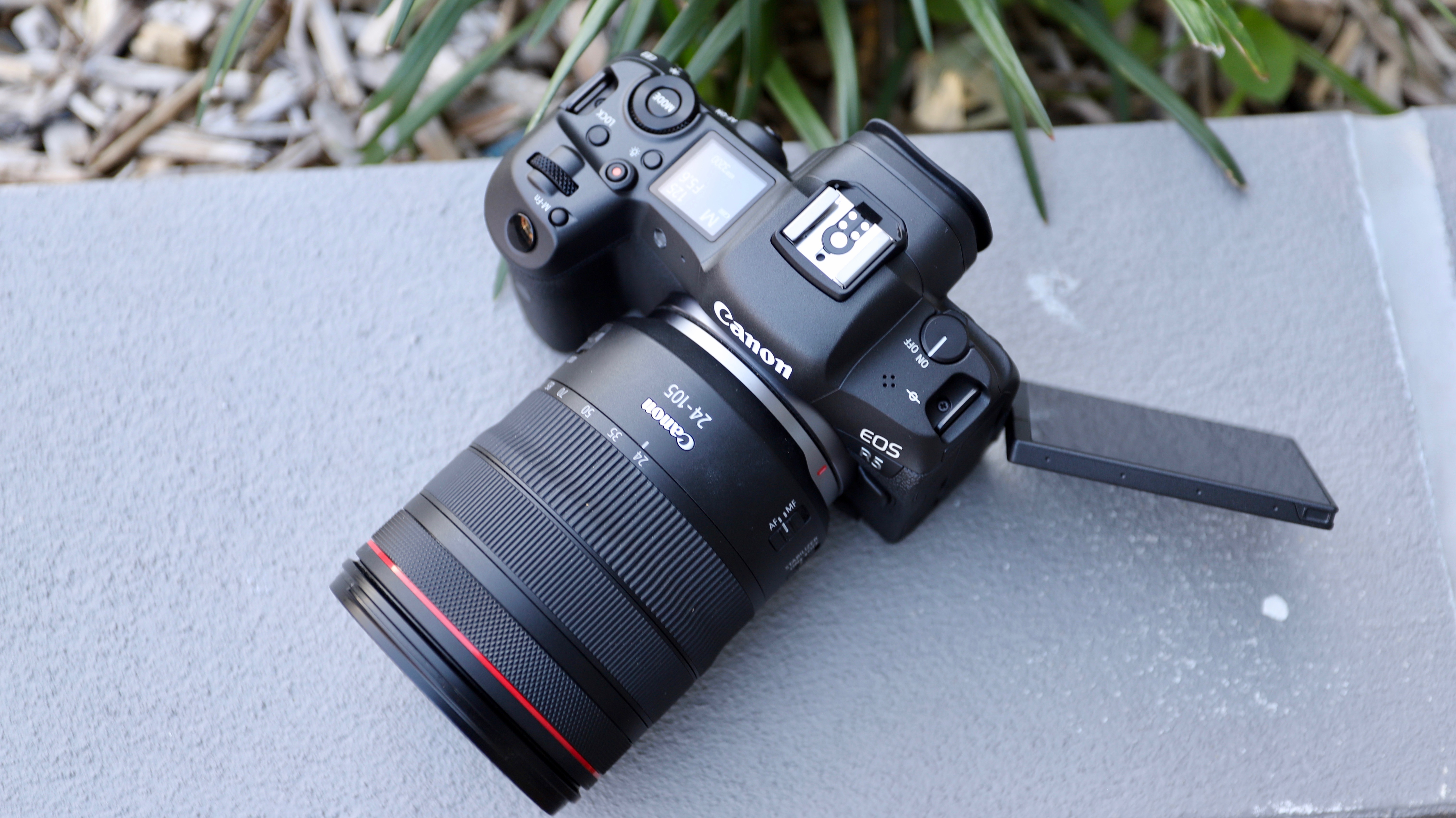
The bar was well-and-truly raised when the Canon EOS R5 was launched. Boasting 8K video, a 45MP resolution, up to 20fps burst shooting, an EVF with v.76-million dots, and a 3.2-in fully articulating touchscreen, the R5 crammed all of this crammed into a trunk that weighs a mere 650g. Information technology all read like an unrealistic wishlist. Too skilful to be true? For the all-time part, the EOS R5 well and truly delivers.
This is Canon's most competent mirrorless camera for photography. The loftier-resolution sensor is well supported by an incredibly effective autofocus system, while its competitive 12fps continuous shooting is gobbled up by the powerful DIGIC X processor.
Then there is 8K video recording, not found on any other camera at this toll indicate. Video prototype quality is incredibly sharp, complemented by hands graded color profiles and Canon's start in-body paradigm stabilization (IBIS) system. There is i well-reported caveat; overheating with lengthy cooling downwards periods. Consequently, 8K video recording time is limited and therefore unusable for heavy-utilise pros. However, 4K video recording fares ameliorate, fifty-fifty if in that location is still a video recording cap.
It's not out-and-out hybrid perfection, but the EOS R5 yet takes the crown as the almost well-rounded camera for pro photographers.
- Read our in-depth Canon EOS R5 review

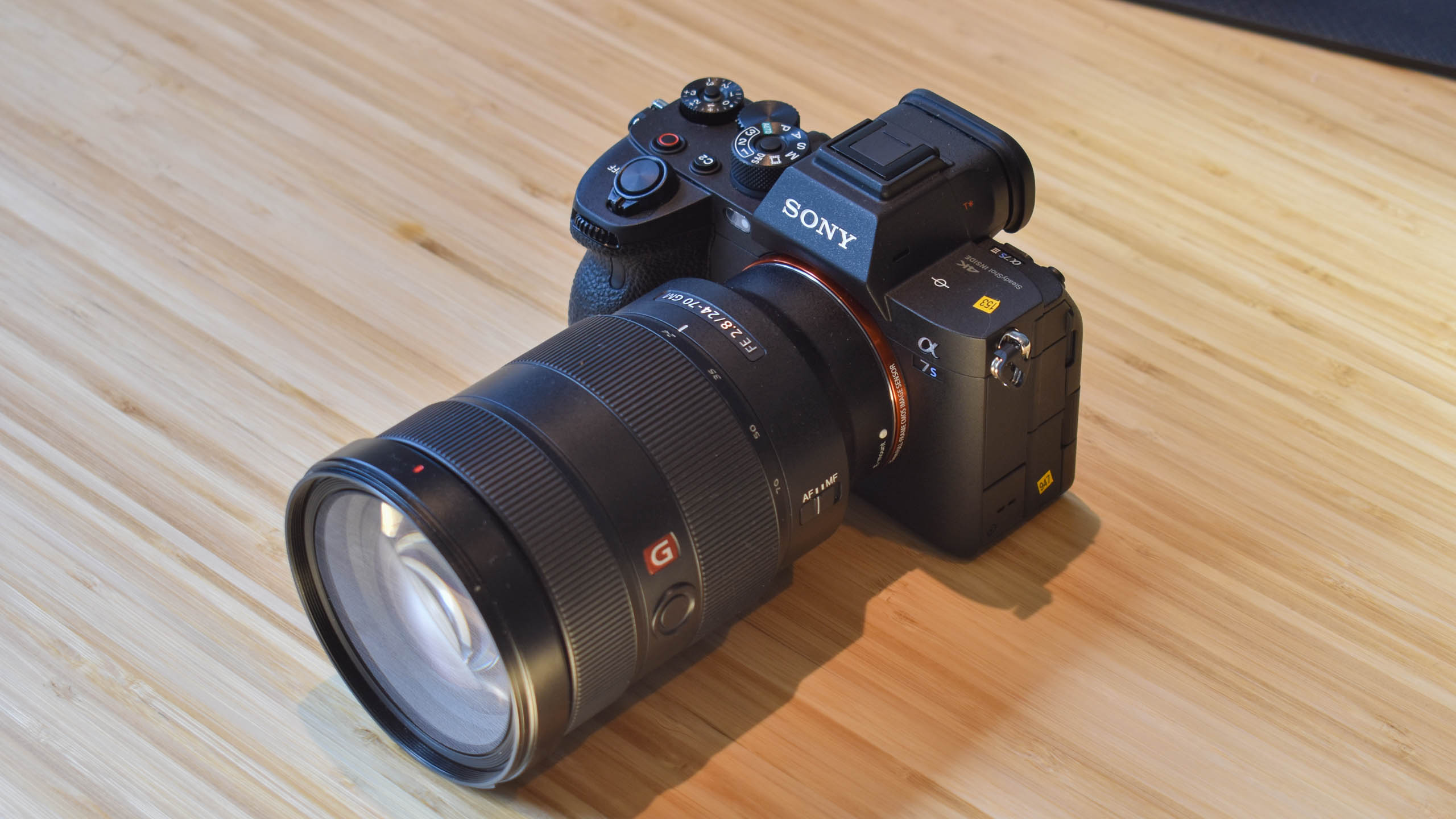

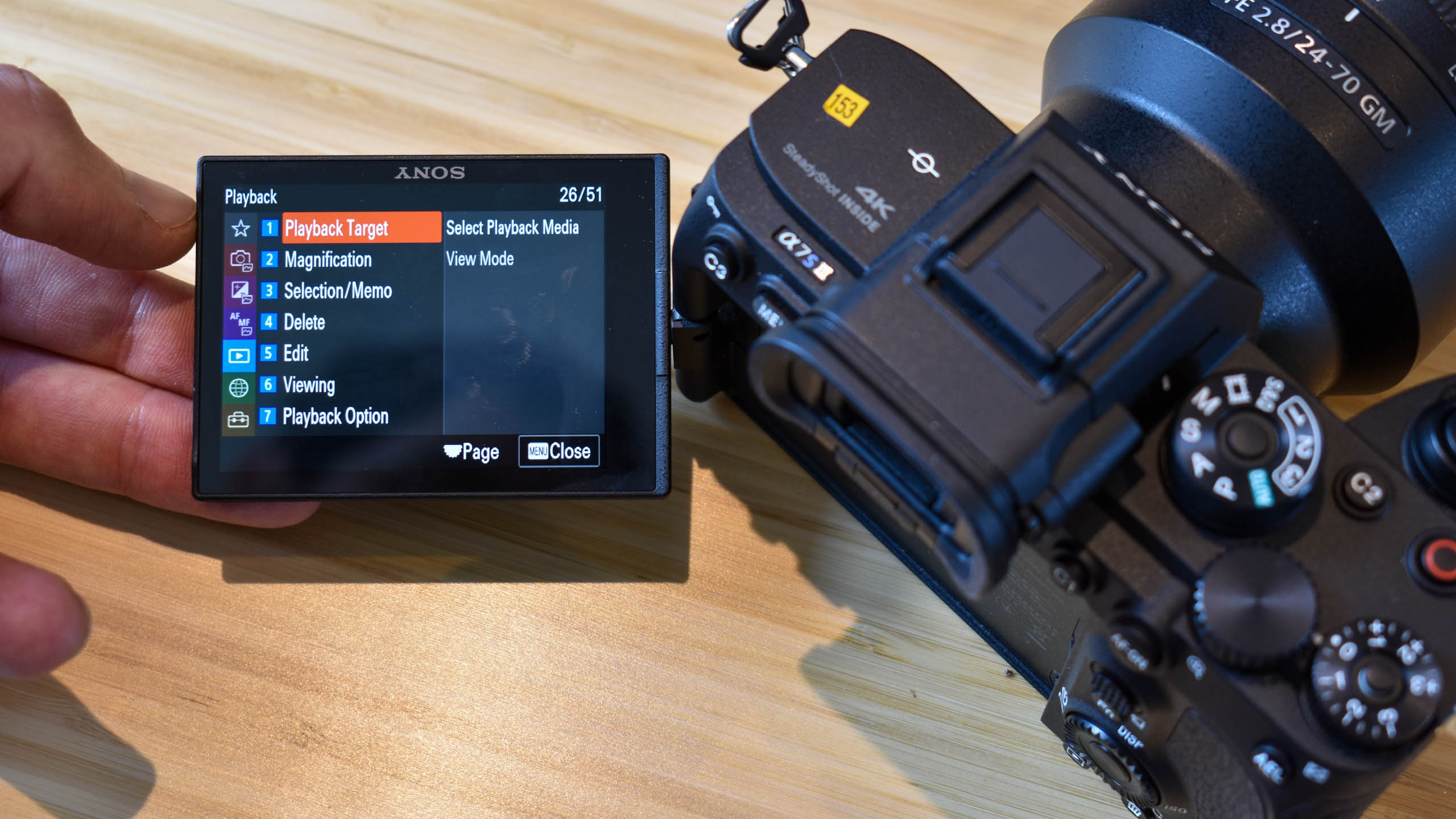
When 4K video recording is your master concern, and so the Sony A7S III is hands-down our summit hybrid photographic camera. This is a pro'due south tool, totally reliable and with no existent limitations. Being the video-axial A7 model, some hoped to be diddled away by 6K or 8K video recording, just instead Sony clearly focused on getting 4K video right, with no nasty surprises. What we have is a technically perfect photographic camera.
Its lightweight 600g torso is durable and boasts lovely ergonomics, the articulated screen has full touch on command, there's truly effective IBIS, decent bombardment life and comprehensive 10-flake 4K video frame rates at up to 120fps with no record limit and no overheating. Autofocus is an accented dream, while rolling shutter is very well controlled.
Image quality-wise, the dual native ISO 640/ISO 16,000 offers unparalleled low light functioning and dynamic range. What'south more, the A7S Iii recently enjoyed a firmware update that introduced the gorgeous South-Cinetone color profile originally found in the Sony FX9 cine camera. If you lot don't mind the depression 12MP resolution, stills look lovely, as well. Really, nosotros could keep banging the drum for the Sony A7S III, information technology really is that skillful.
- Read our in-depth Sony A7S III review

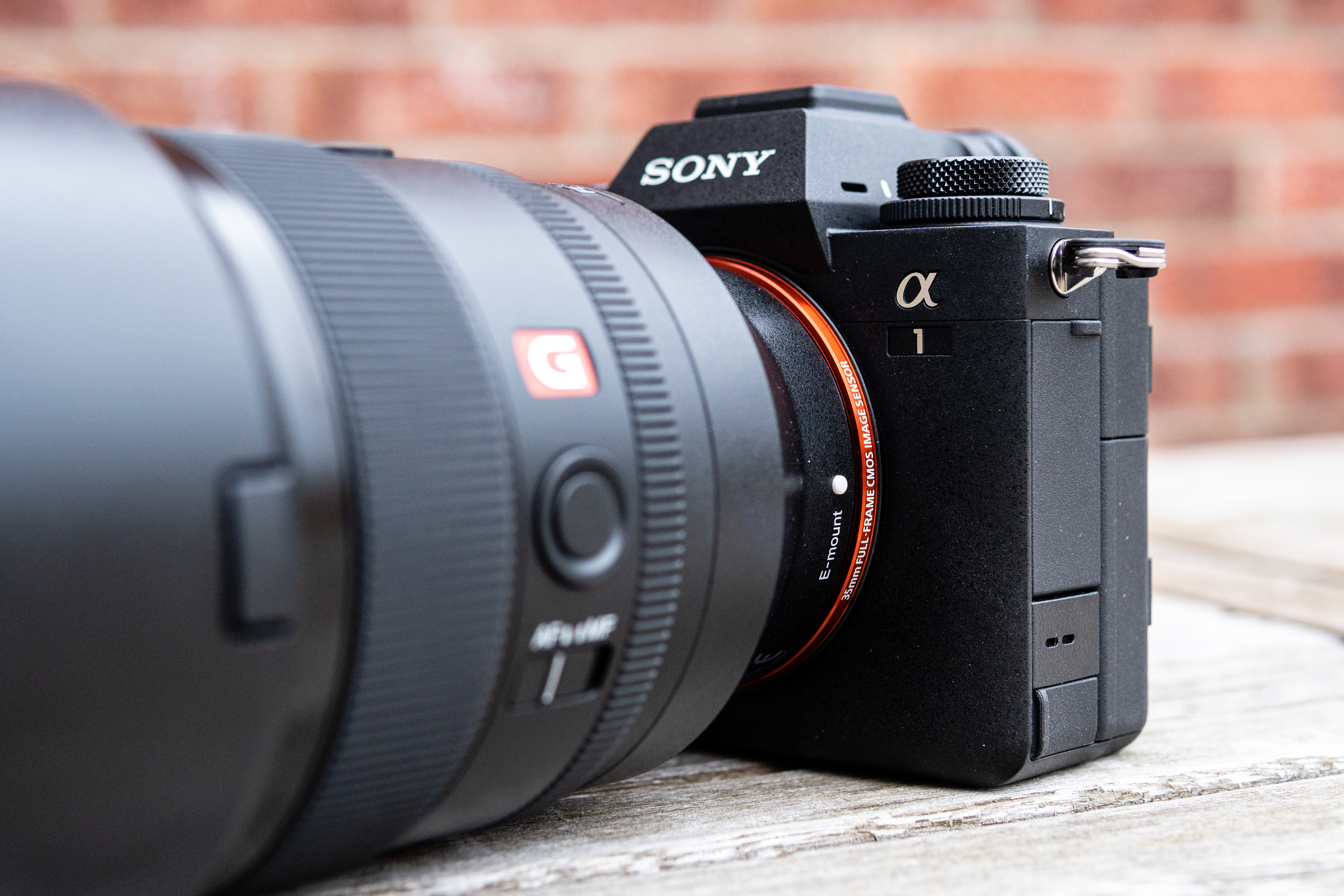
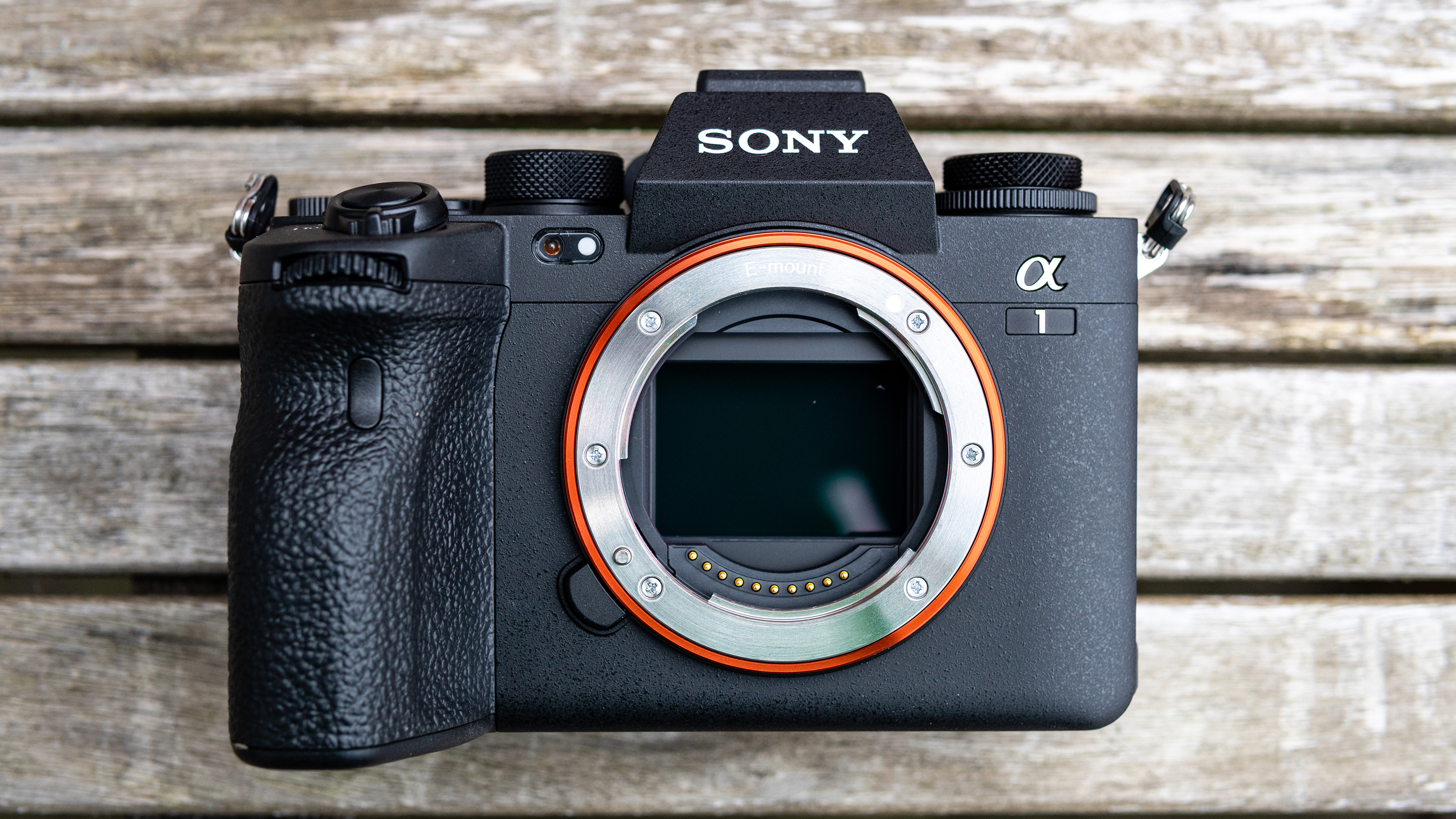
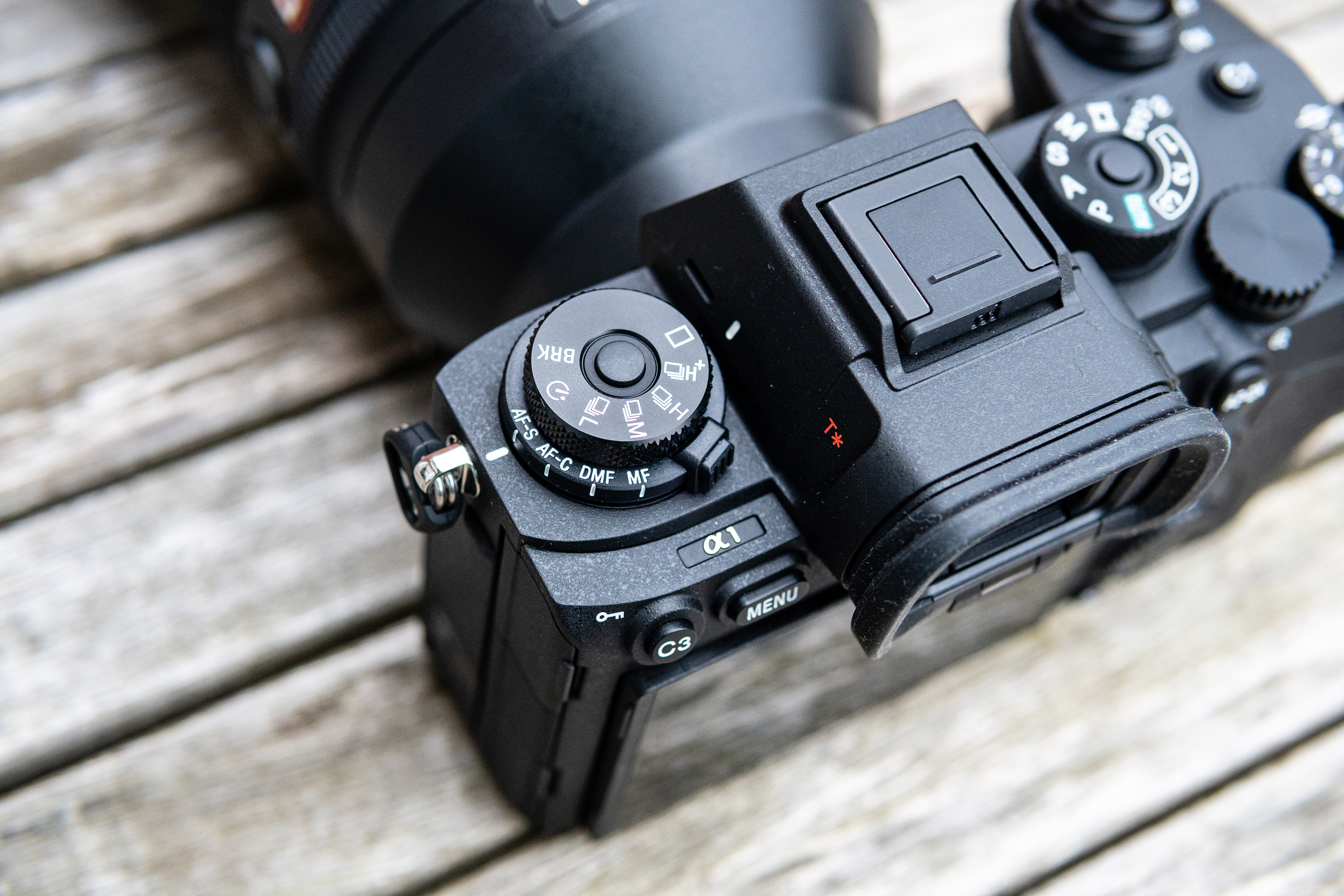
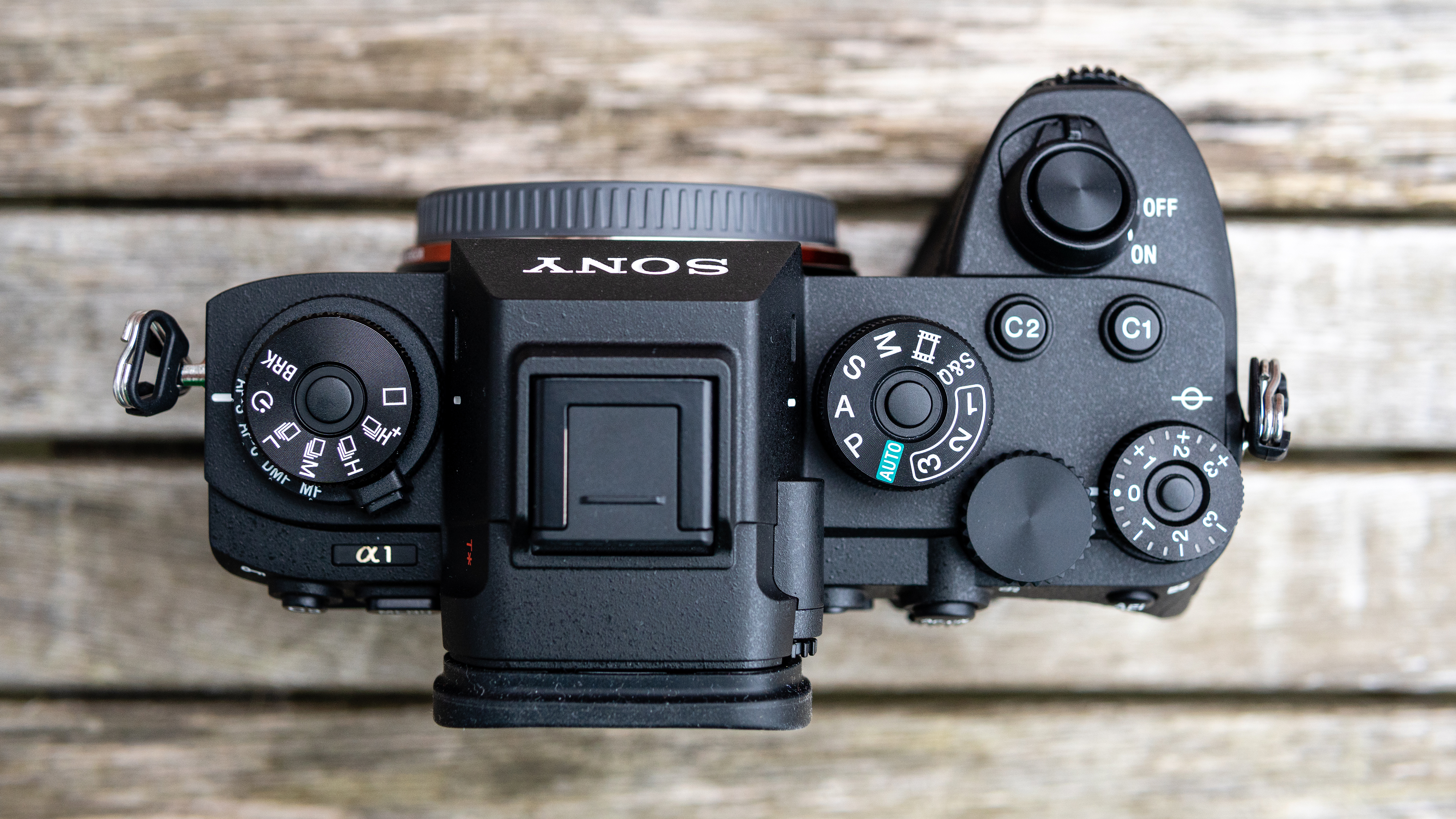
Boasting an extremely rare alloy of speed, loftier-resolution stills and 8K video, the Sony A1 is pretty much the ultimate mirrorless camera and without a shadow of a doubt, Sony's flagship. It really is a photographic camera that can tackle any bailiwick that you lot care to throw at it, blending together fine detail and super-fast shooting speed.
Of form, all of that doesn't come up cheap, with a car-sized price tag attached to it that may well ready your optics watering if you don't accept a large budget to manus.
Look at it another fashion though, and it arguably represents practiced value. No longer practice you need one camera for studio work and some other one entirely for taking to the racetrack - when you lot've got one camera that does it all, you may really terminate upwards spending less than y'all might.
Aside from an impressive 50.1MP sensor, yous get 30fps shooting (even more impressive at that resolution), 8K video and 4K at 120p. If you're already a Sony shooter then when it comes to upgrade time, the A1 may be a bit of a no-brainer if yous've got the funds to spare, and it'southward also a pretty tempting proffer for those coming from other brands too.
- Read our in-depth Sony A1 review

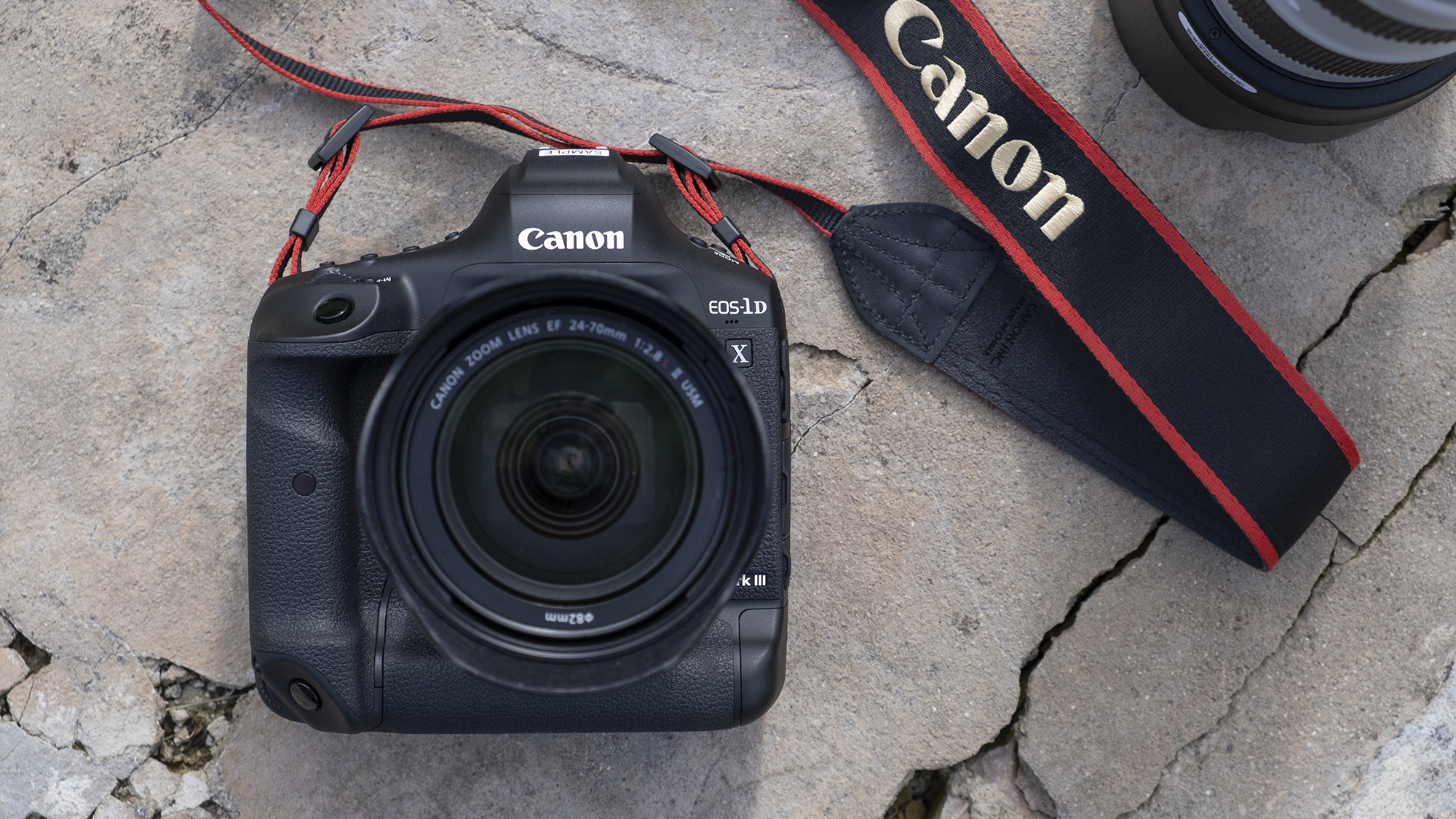
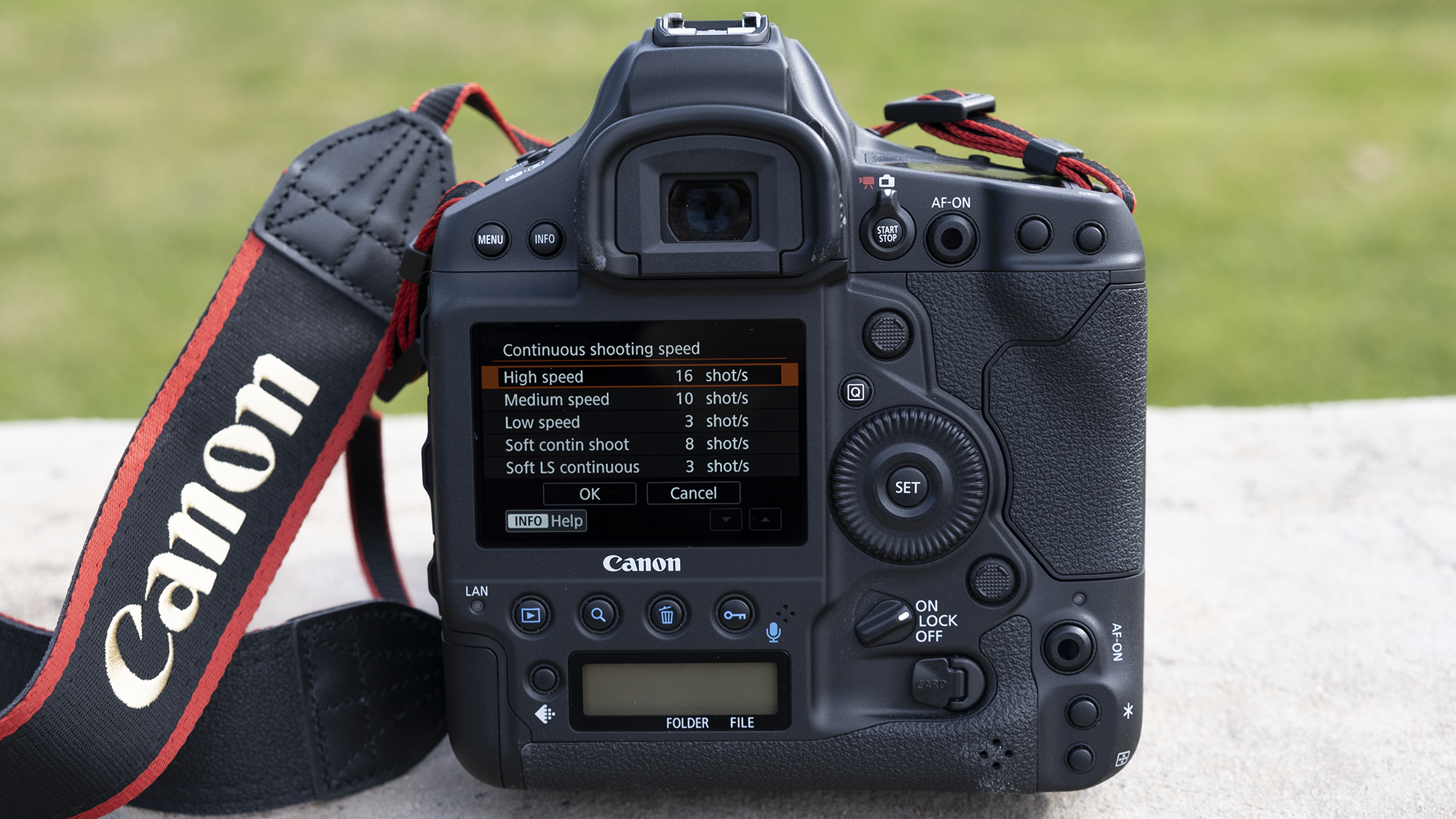
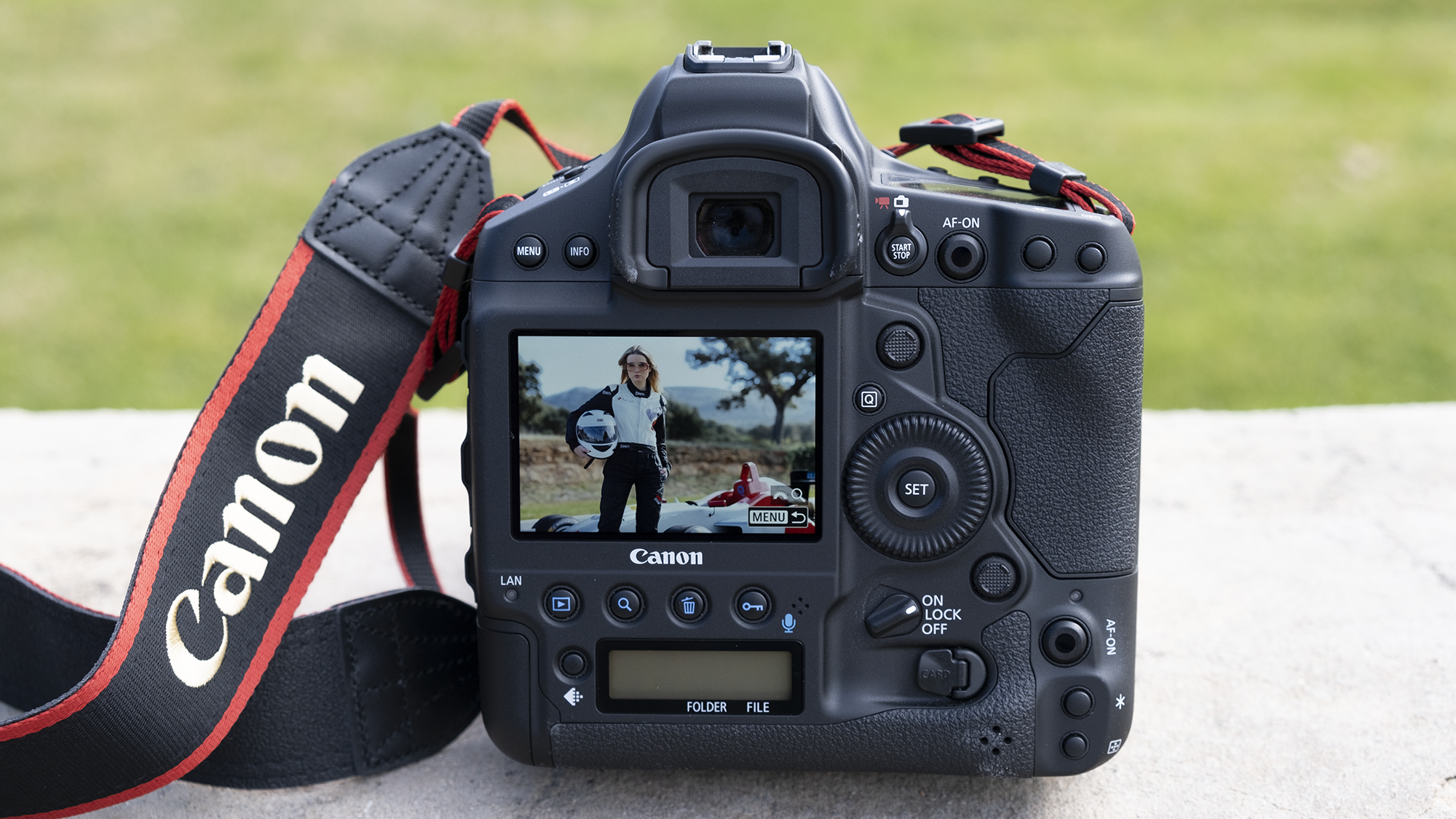
The Canon EOS 1D X III is the visitor'due south flagship DSLR, a camera typically seen in the hands of professional action photographers at big events. It's a substantial and rugged bit of kit, designed for speed and to withstand harsh conditions. They don't come tougher than this.
You lot'll be able to rattle off 20.1MP still images at a charge per unit of 16fps until the retention carte fills up. Truly, there is no limit in the camera's performance for action and it is backed up by a staggering bombardment life of nearly three,000 shots (which in real utilize for continuous shooting is much higher, too). Subject-tracking autofocus performance is too simply jaw-dropping.
Only this isn't but an action camera – the EOS 1D Ten III is a vivid video tool too, with v.5K RAW 10-bit video up to 60fps. Beware, you lot'll need to salve up for a scattering of expensive CFexpress cards because those video files are huge. Unlike other competing DSLRs, Canon'due south Dual Pixel AF works exceptionally well in Live View, where you virtually get equal AF performance to when yous're using the brilliant optical viewfinder. The merely existent downside is that in that location has been a price hike in this third 1D X installment.
- Read our in-depth Canon EOS 1D X Mark III review

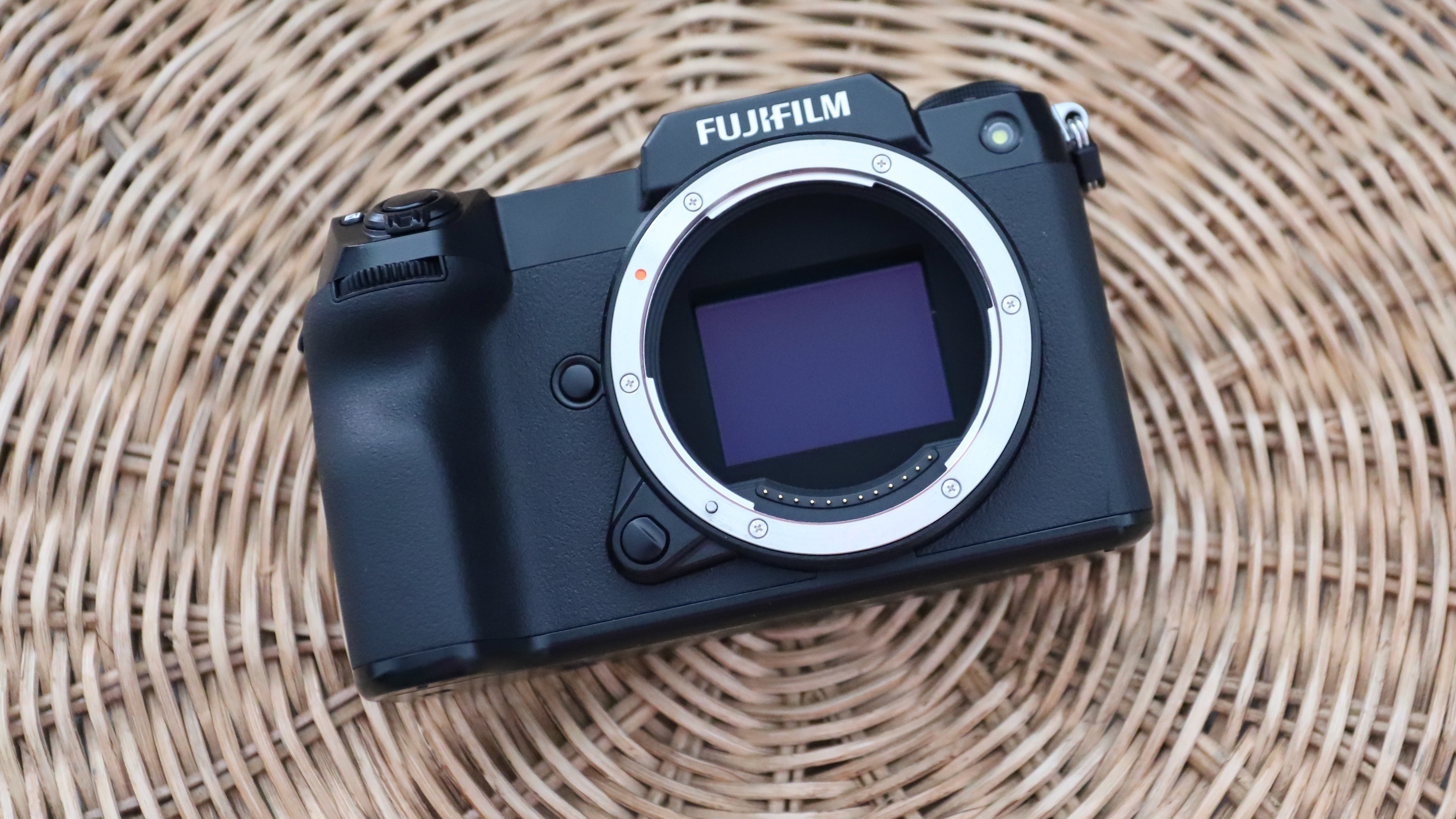
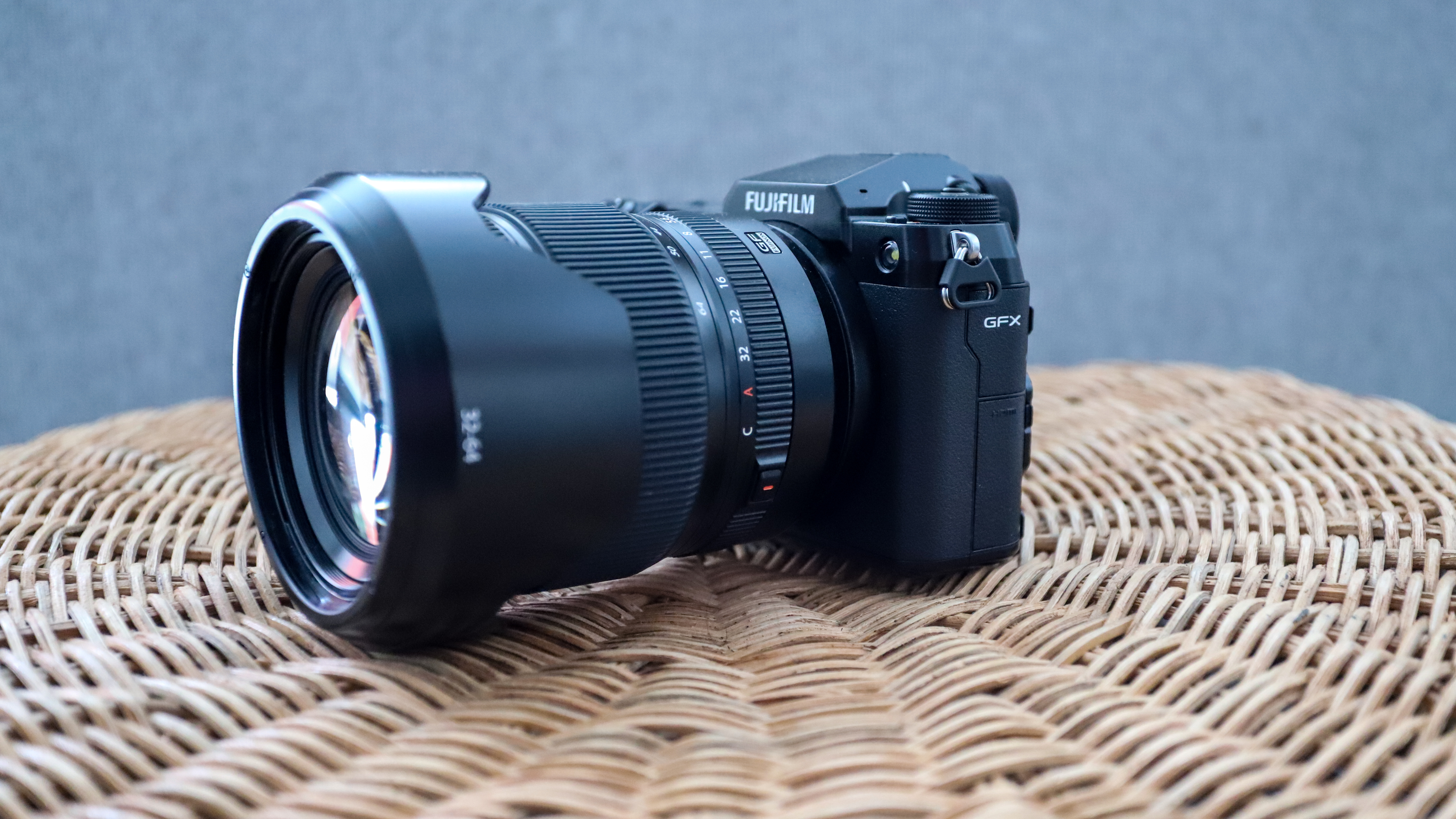
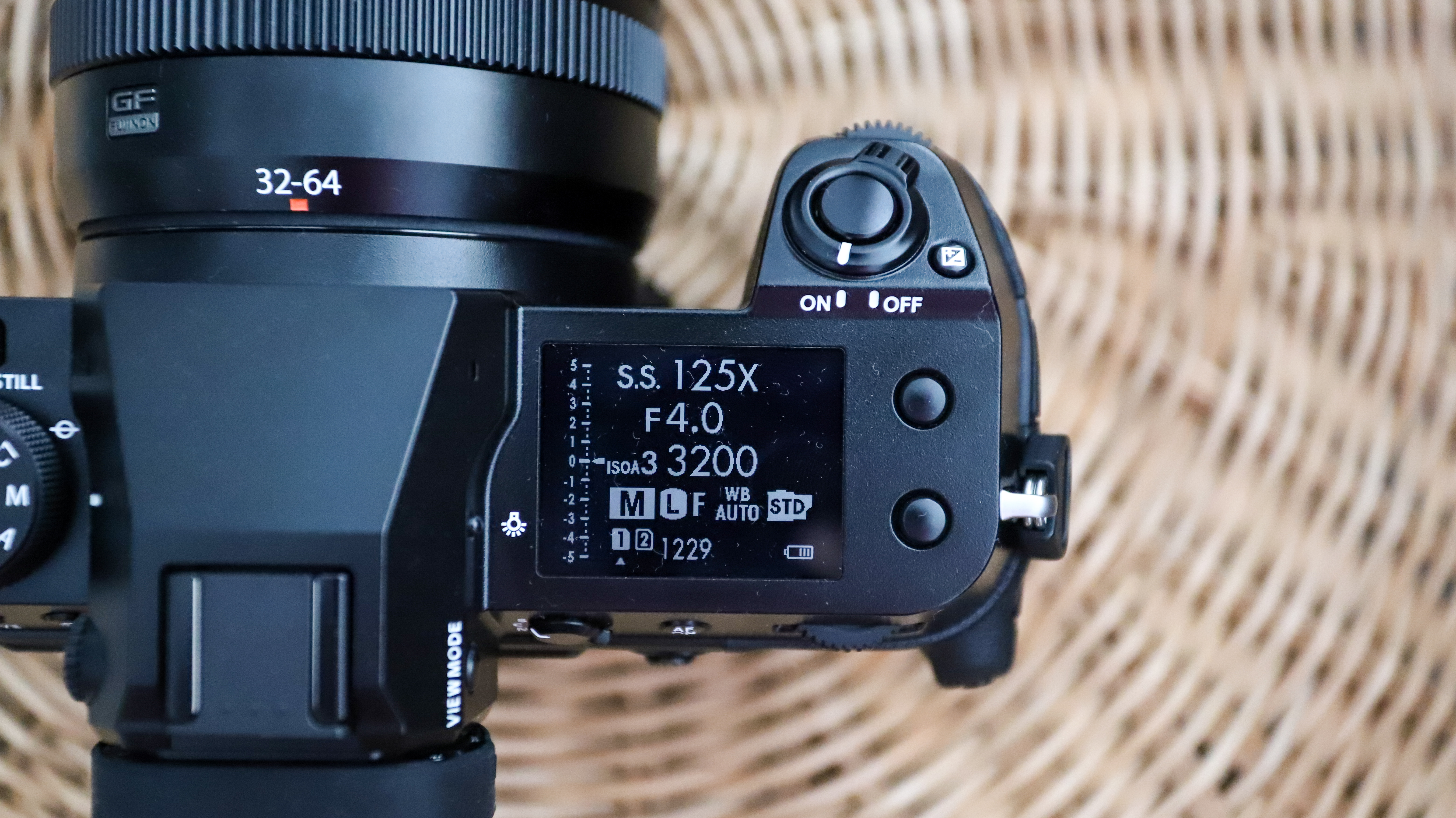
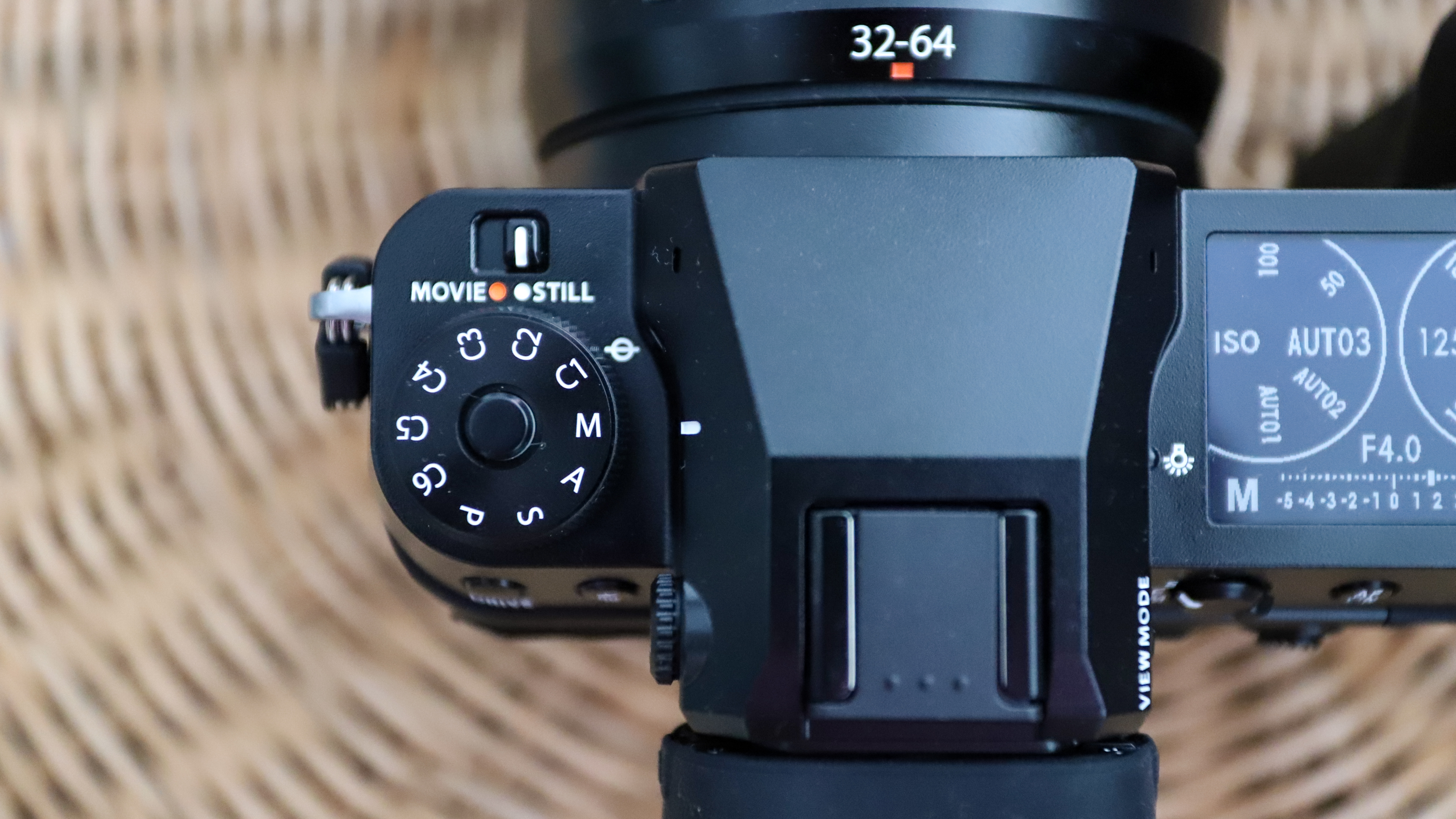
When merely digital medium format will do, the ii current players competing for your attention are Fujfilm and Hasselblad. At that place are pros and cons for each system, and arguably Fujifilm is pushing the boundaries more, as seen in the new GFX100S. Similar the Fujifilm GFX100, the GFX100S features a whopping 102MP medium format sensor. What grabbed the headlines, though, was an almost unfathomable price drop of almost 50%.
The GFX100S ditches the vertical grip and the battery life is reduced to a withal-respectable 460-shots, because the camera now just houses a single battery unit. On the plus side, the camera is about 2-thirds the size and weight of the GFX100. Yes, that medium format goodness is housed in a DSLR-size trunk. Oh, and in-trunk stabilization effective up to 6EV is introduced, too.
As far every bit medium format goes, the GFX100S packs some impressive tech from its 10-Series, including its mostly responsive autofocus organization. And if that 100MP resolution is not enough, at that place's a new 400MP high-res mode (combining 16 shots using pixel shifting). Being a Fujifilm, the GFX100S is a fine looking camera, too. Overall, the GFX100S is the most compelling selection to switch to from full-frame mirrorless cameras or DSLRs.
- Read our in-depth Fujifilm GFX100S review

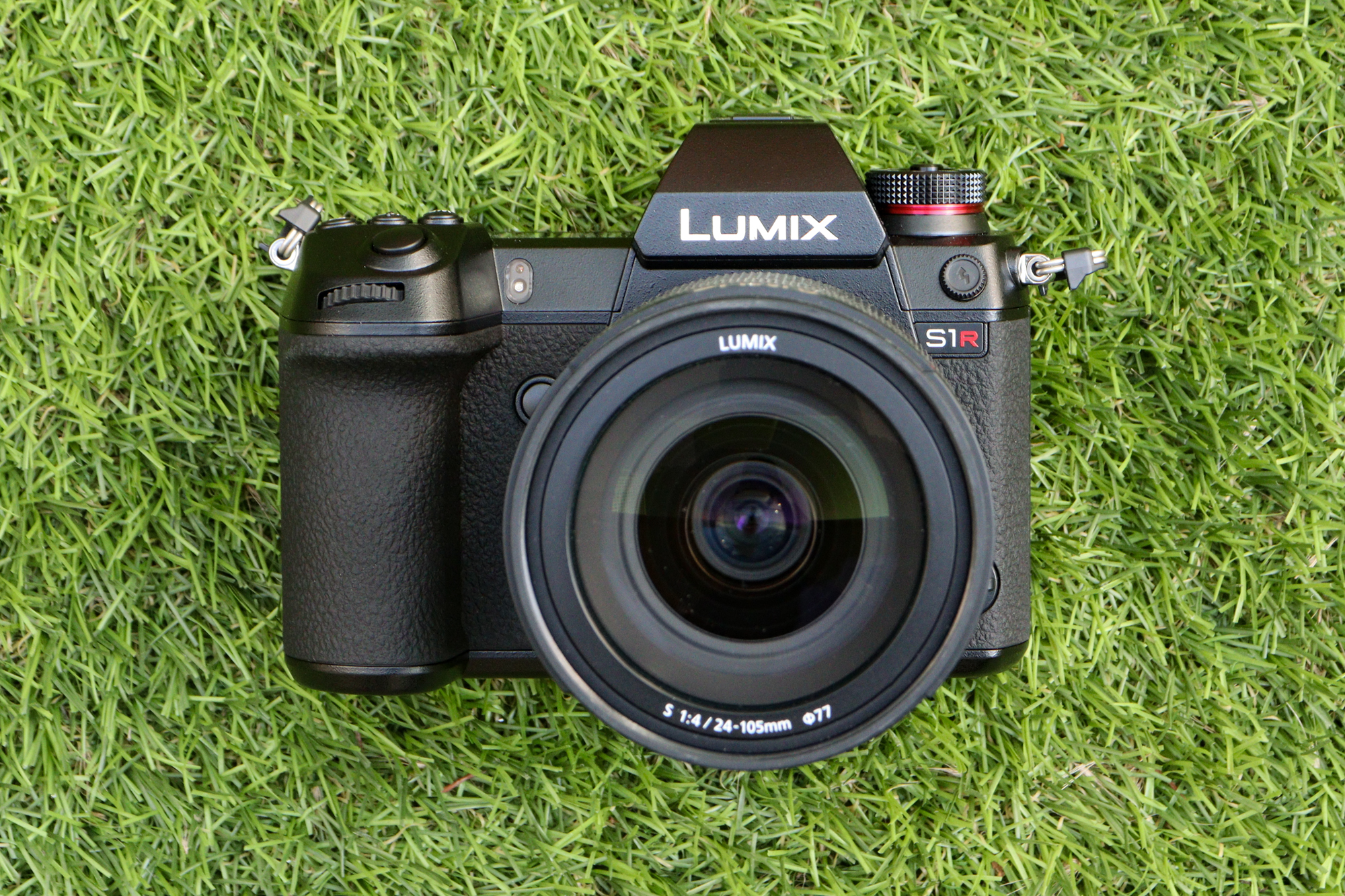
The Panasonic Lumix S1R was part of the company'southward first foray into the full-frame mirrorless camera market – and it's and an exceptionally capable camera. The company has wasted no time in building the system up either, with regular launches of new L-Mount lenses that have already covered almost all conventional pro choices, like the 24-70mm and seventy-200mm f/2.eight's.
And what of the S1R itself? Well, it's the high-resolution selection with 47MP, ideal for mural photography peculiarly. Information technology is also a highly capable video performer – we'd expect that from Panasonic. The company is steadily improving the S1R which has already had five firmware updates, recently including 5K/30fps video recording in addition to the already existing 4K/60fps ten-bit video.
In the hand, the S1R is bigger and heavier than the contest – there'south really no reward compared to a DSLR. Nonetheless, the ergonomics are peachy, the build quality is infrequent and the 5.76-meg dot EVF gives a great viewing feel. The simply real downsides are that autofocus is the to the lowest degree effective amidst high-resolution total-frame options, and we'd likewise like a better battery life. Simply similar near cameras today there is the choice of USB-C charging on-the-become.
- Read our in-depth Panasonic Lumix S1R review


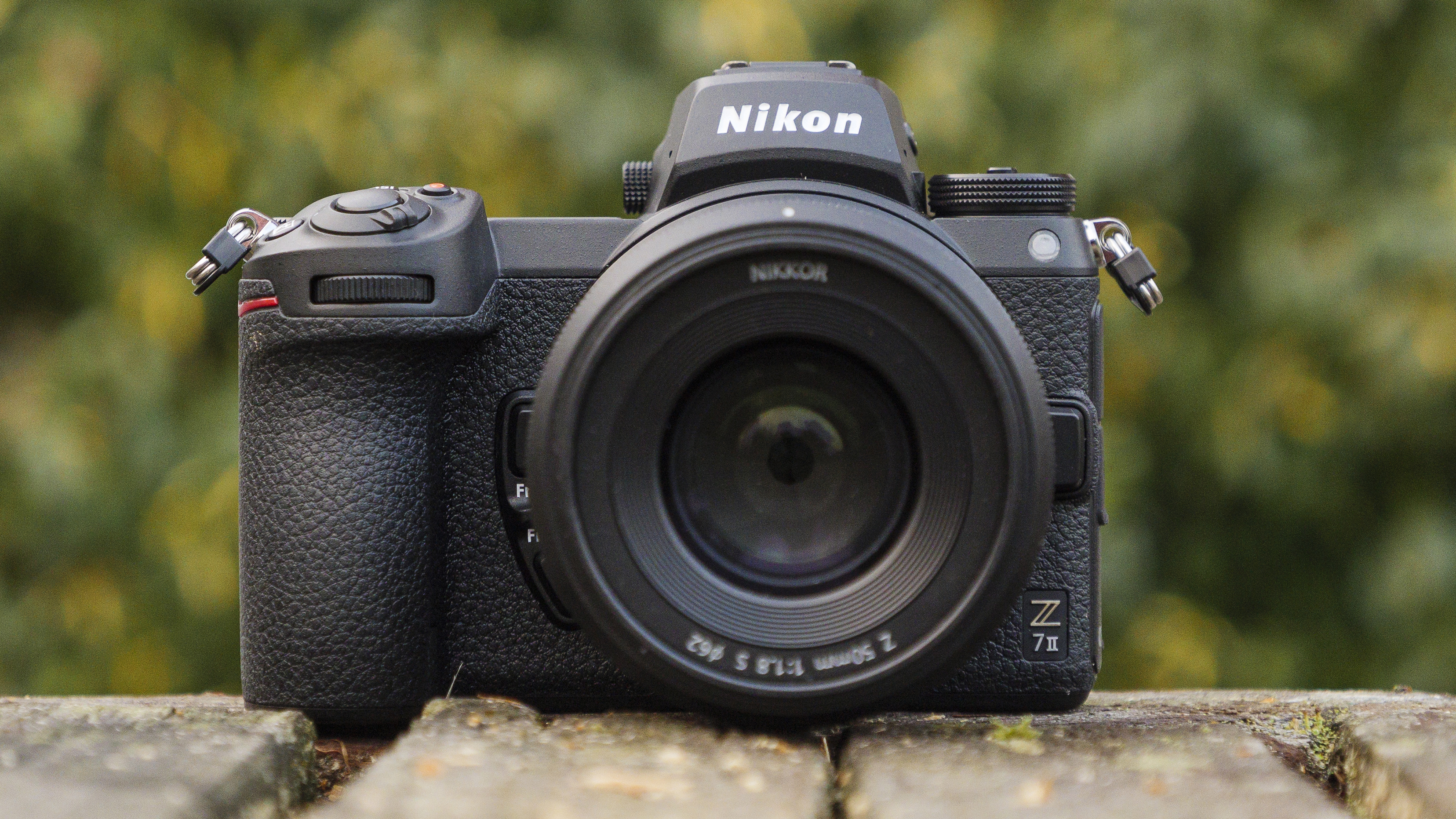
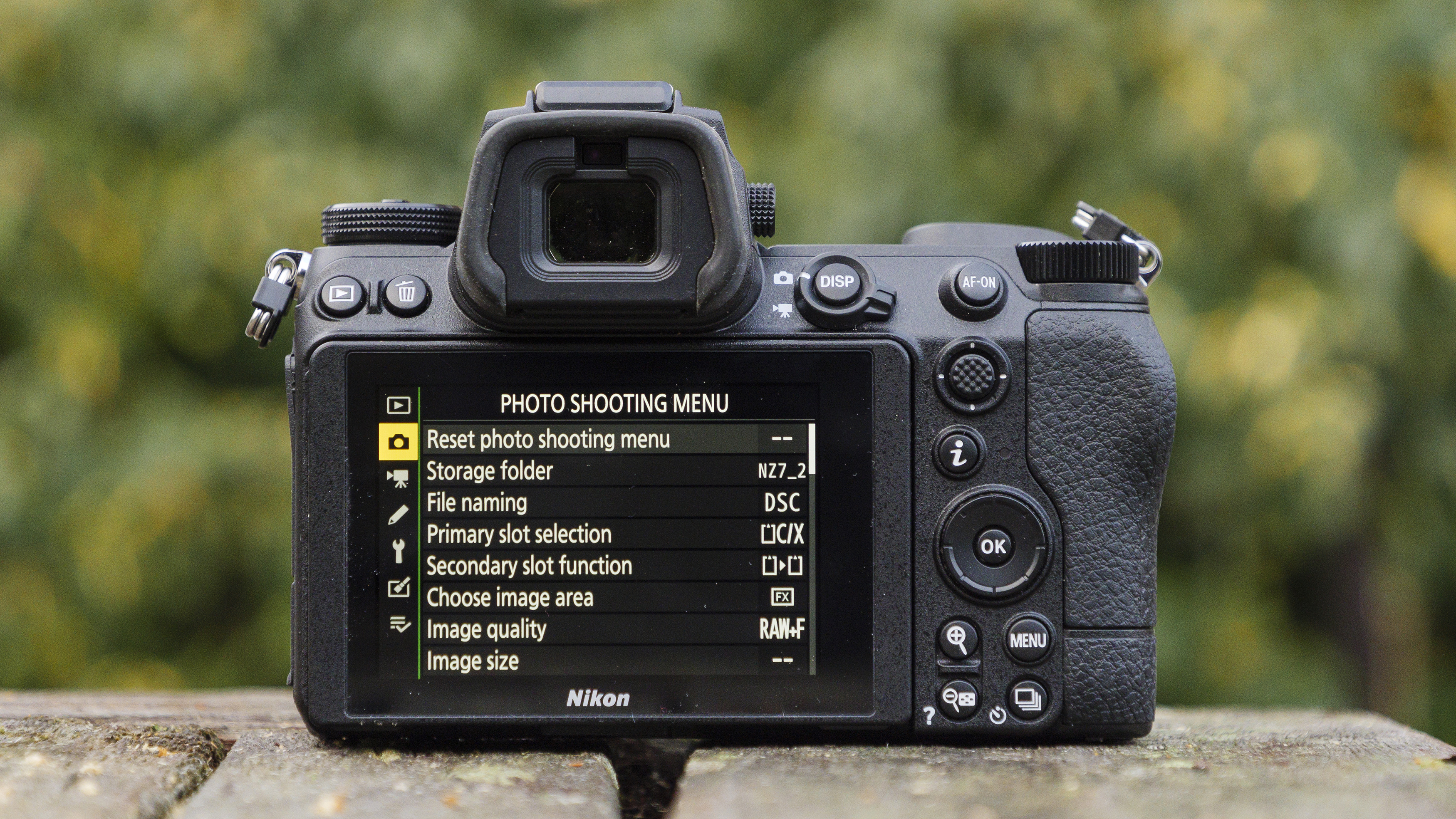
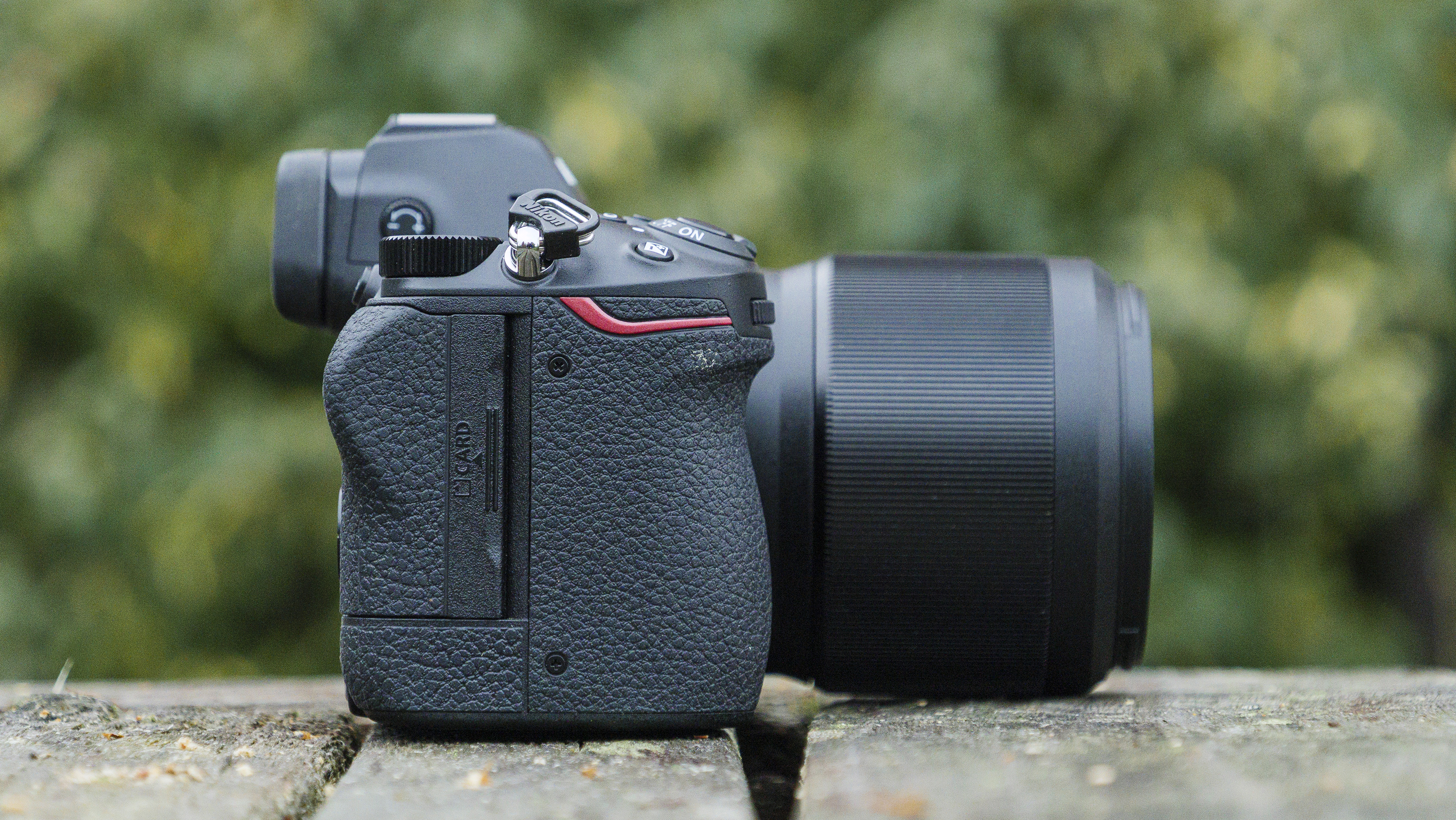
The Nikon Z7 II is the company'southward best mirrorless camera today. Being a high-resolution flagship with first-class image quality and dynamic range, it competes confronting others in this roundup, such as the Sony A7R IV and Panasonic S1R. For the most part, the Z7 II holds its own, and at a lower price point.
Perhaps what's almost intriguing about the Nikon Z7 II is the arrangement that it is office of. The Nikon Z lens mount is the most versatile full-frame lens mount available today, boasting the largest diameter and shortest flange distance, and therefore the largest angle of incidence in a full-frame lens mount.
If you're scratching your head right now, the larger the angle of incidence, the easier information technology is to make loftier performing lenses. Two years since the system was launched, we are starting to see some actually exciting lenses, while the edge-to-border quality of standard lenses like the 50mm f/1.eight Z is excellent. If you're starting from scratch and basing your buying decision on the whole system, the Nikon Z series could exist for you – and the Z7 II is the gem in its crown.
- Read our in-depth Nikon Z7 II review

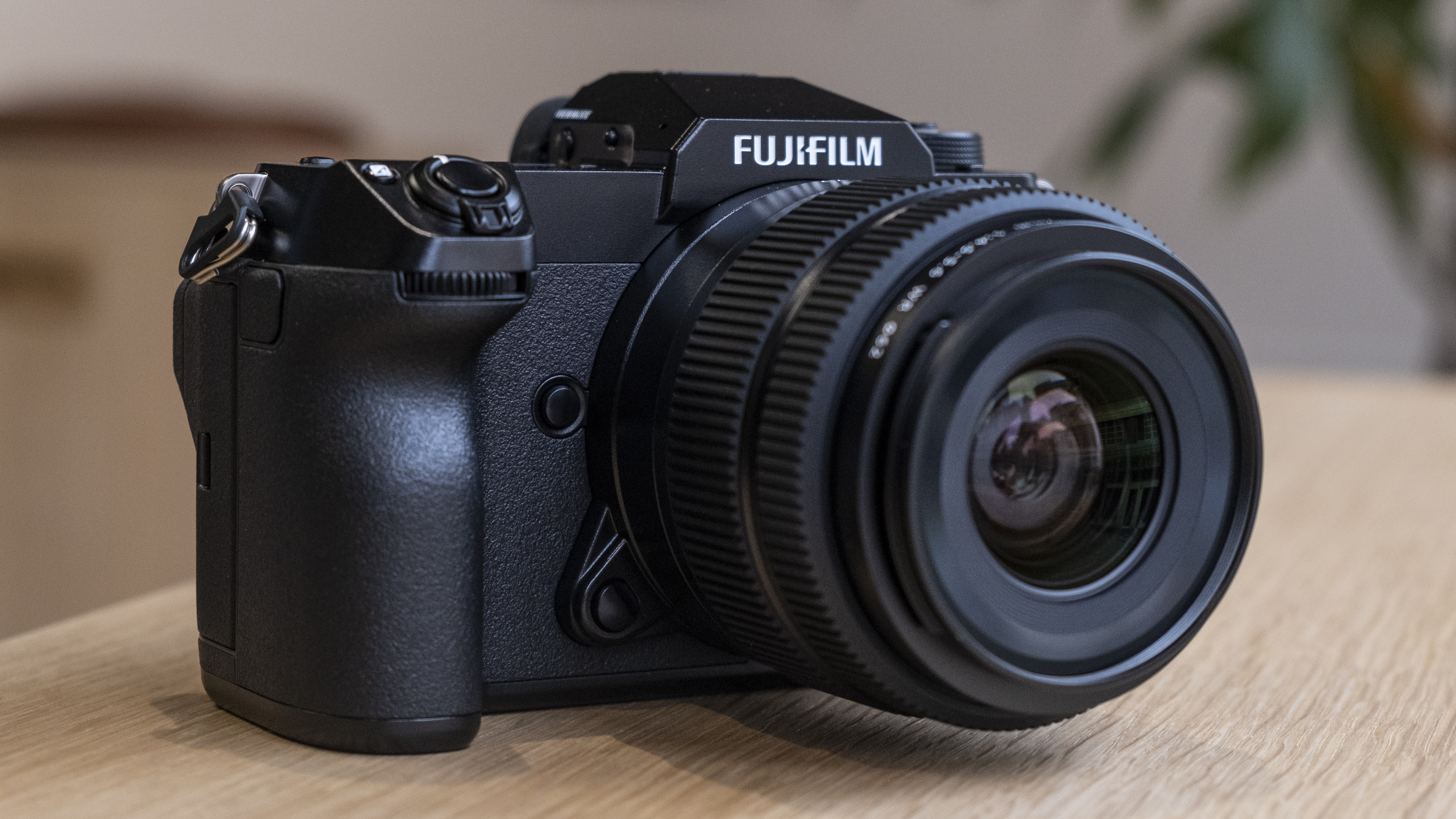
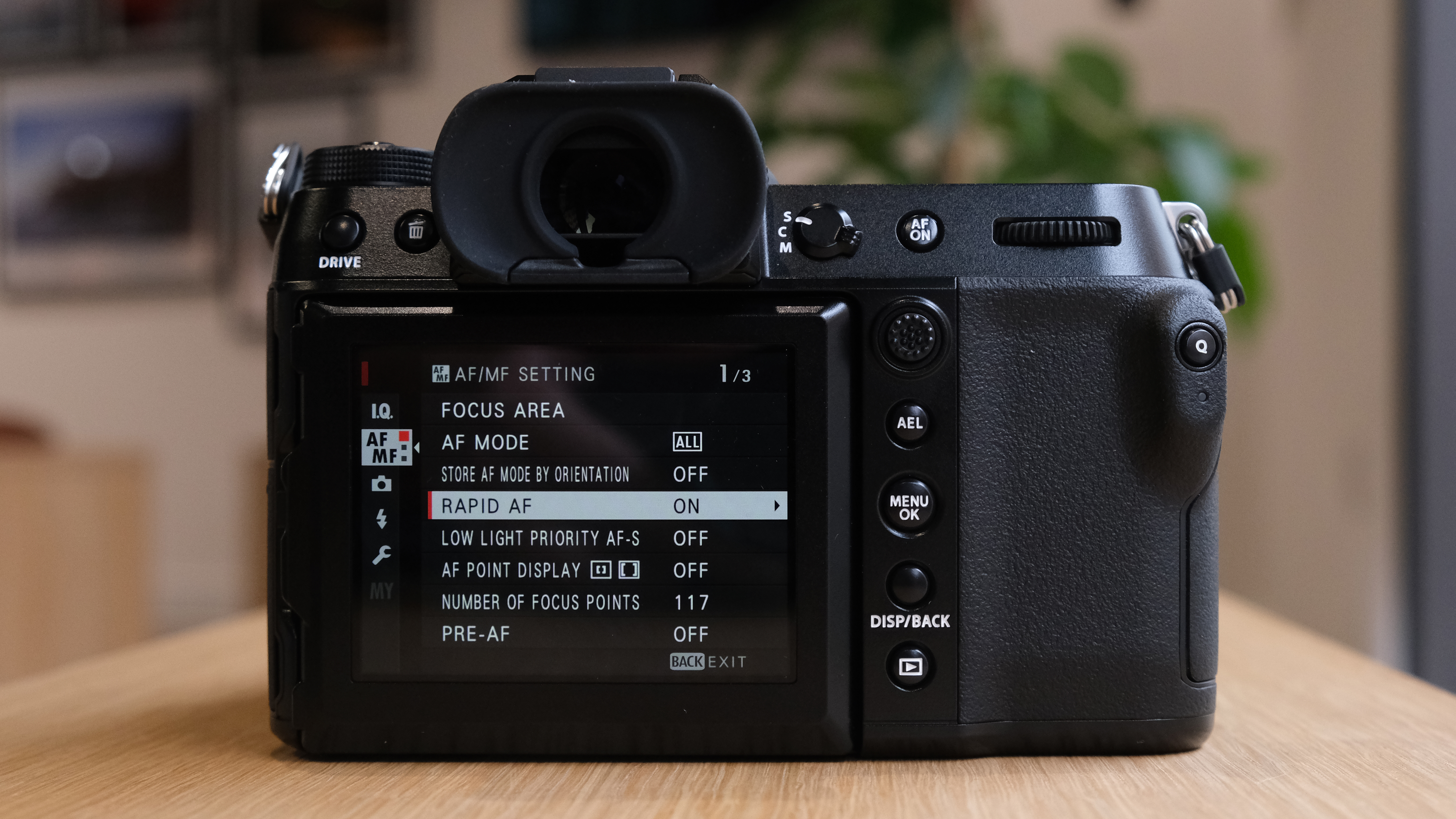
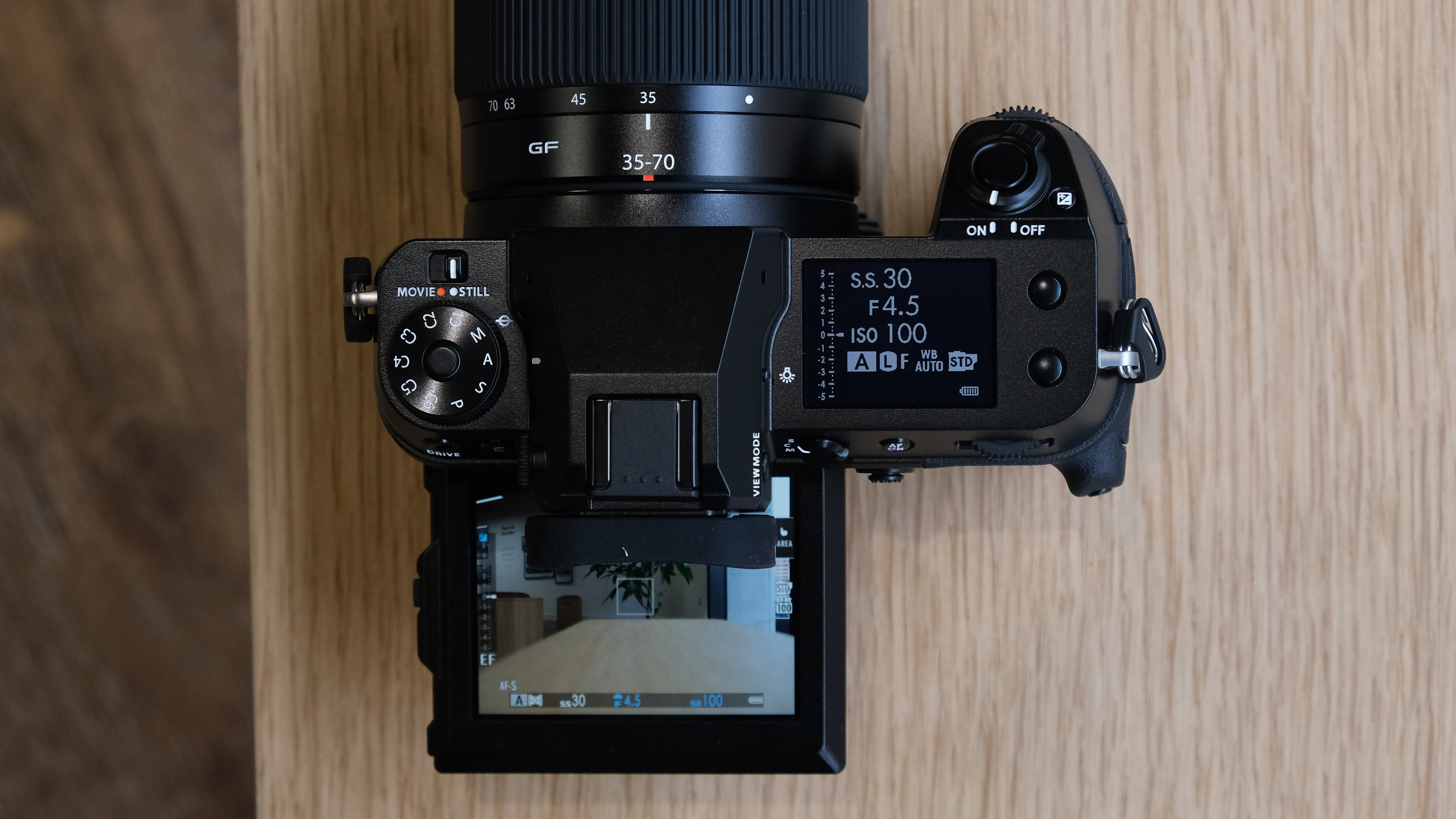
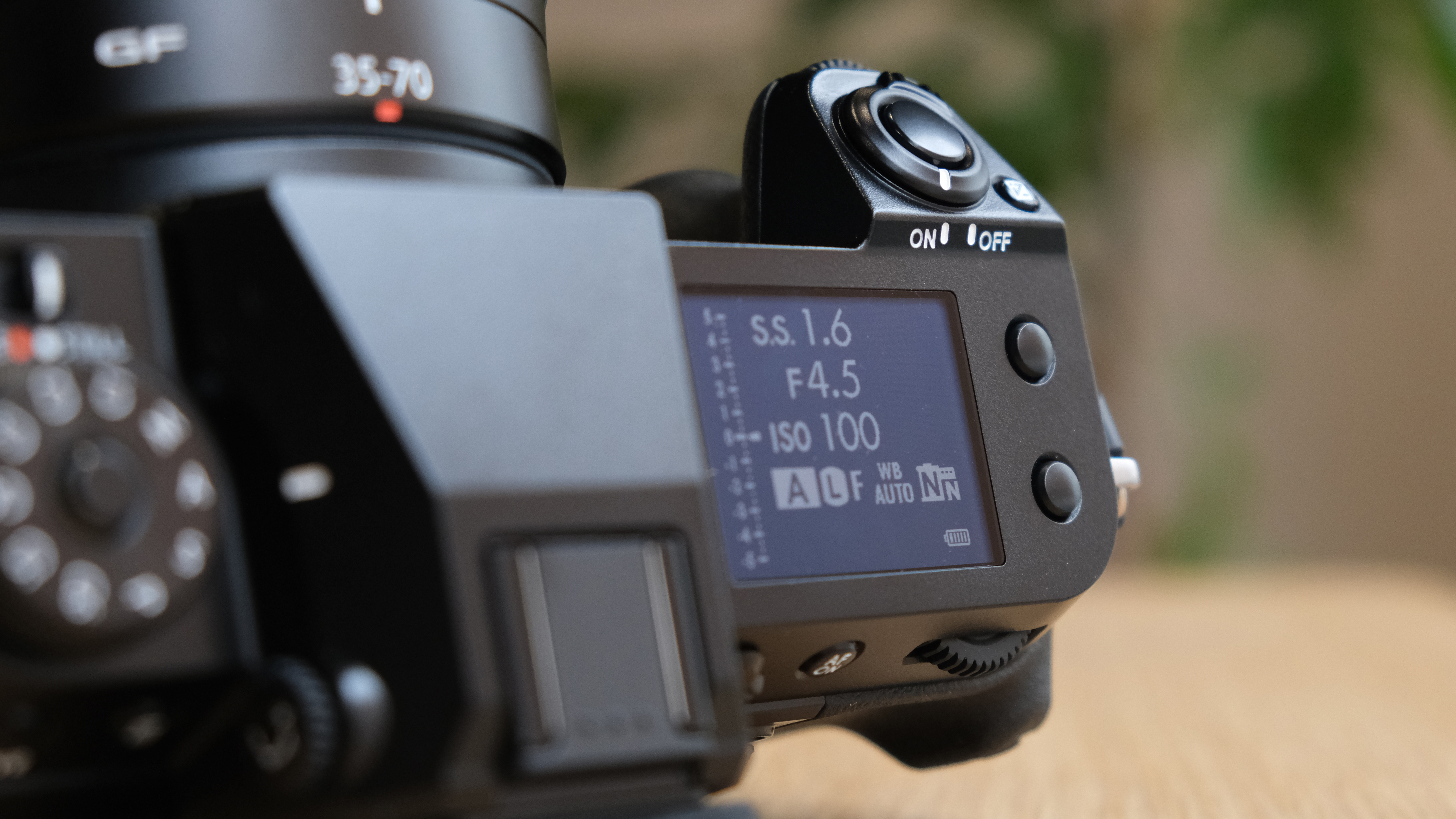
Unlike some of the models in our list that are skilful at a wide-range of shooting scenarios, the GFX 50S II is designed with i thing in mind - high prototype quality and fantastic detail resolution. Its medium-format sensor is ane.7x bigger than the full-frame sensors you'll find in other mirrorless and DSLR cameras.
With a bigger sensor you go meliorate low-calorie-free adequacy, superlative detail capabilities and fantastic dynamic range. The trade off is that information technology's much more than difficult to shoot speedily and speedily with a camera like this - simply that might exist OK depending on the type of lensman you are.
If you're a landscape or portrait photographer, information technology could be merely the ticket for y'all, while sports and activeness photographers are probable to find the relatively slouchy AF system and the slow frame rates (3fps) to be off-putting.
For the first time in a GFX torso, we've now got IBIS (in-body paradigm stabilization) that brings an impressive 6.five stops of compensation for photographic camera shake. That'southward great news for anyone shooting handheld, making this a realistic walk around camera - something that traditionally wasn't really possible with medium format cameras of the past.
At that place are other things which are arguably disappointing here, primarily the lack of 4K video recording, but information technology's not really a camera aimed at videographers, so that'due south understandable.
Essentially what Fujifilm has introduced here is an affordable medium-format camera. Information technology may not be your merely camera, just past bringing it to the marketplace at a reasonable price, it gives professionals the option to add together something ideal for those situations that require it to their kit bag.
- Read our in-depth Fujifilm GFX 50S Two review

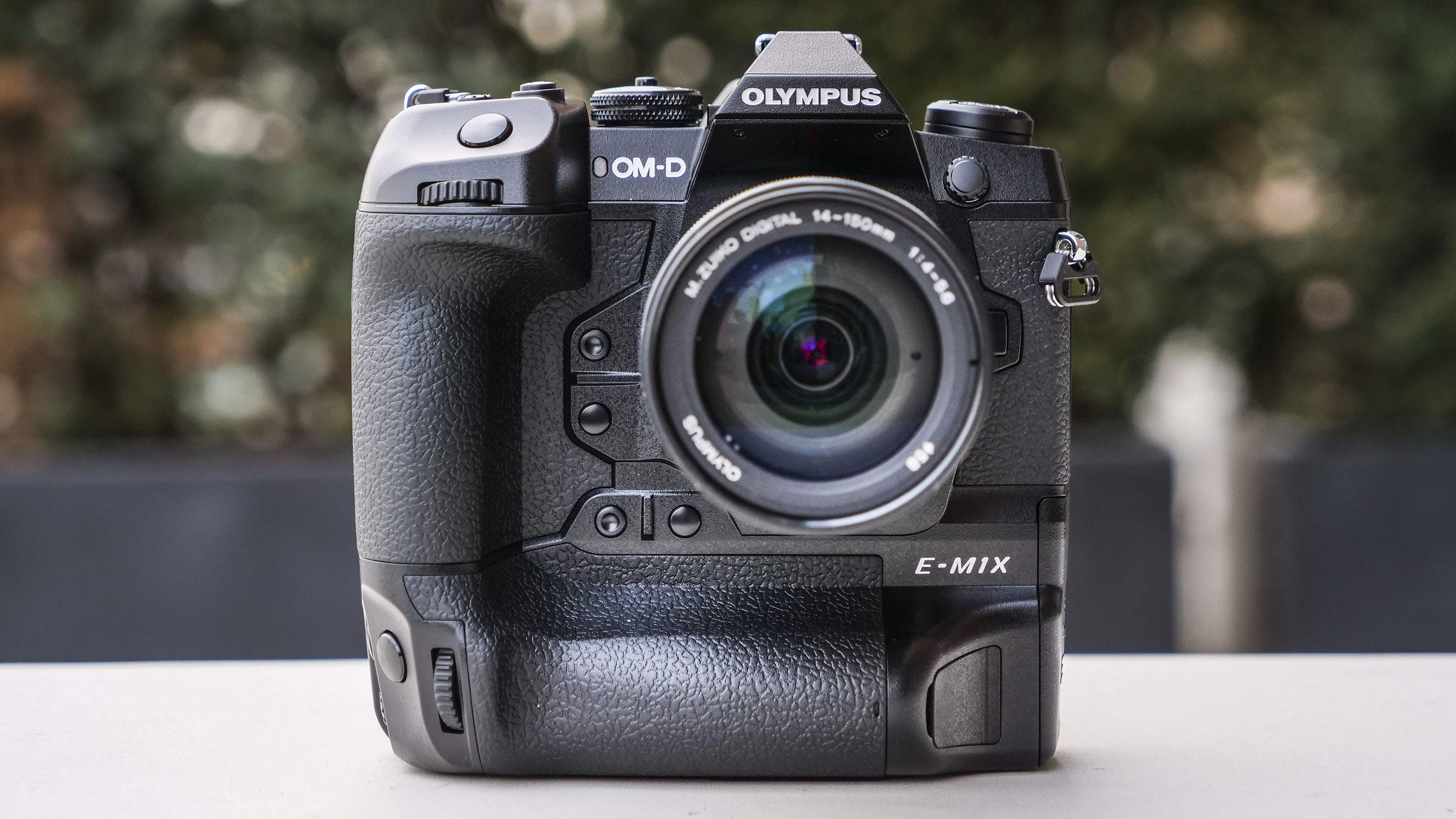
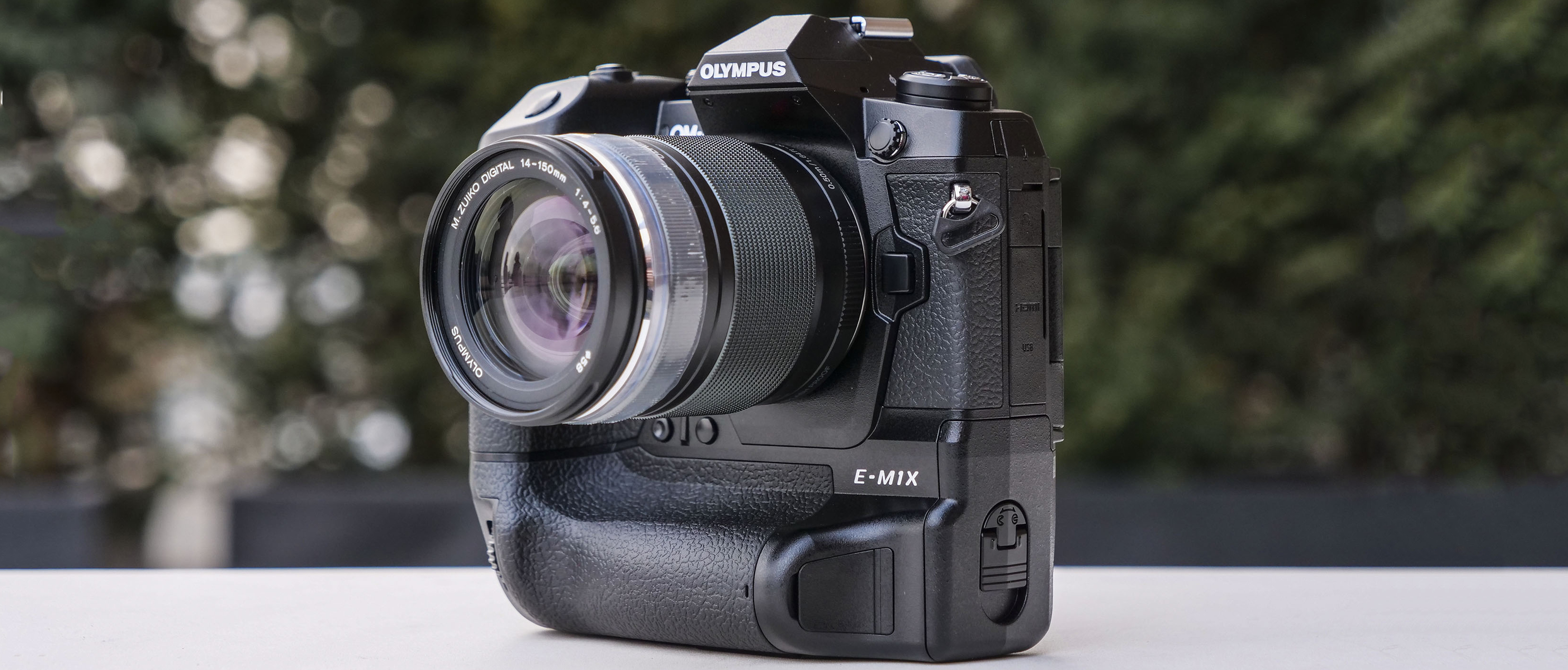
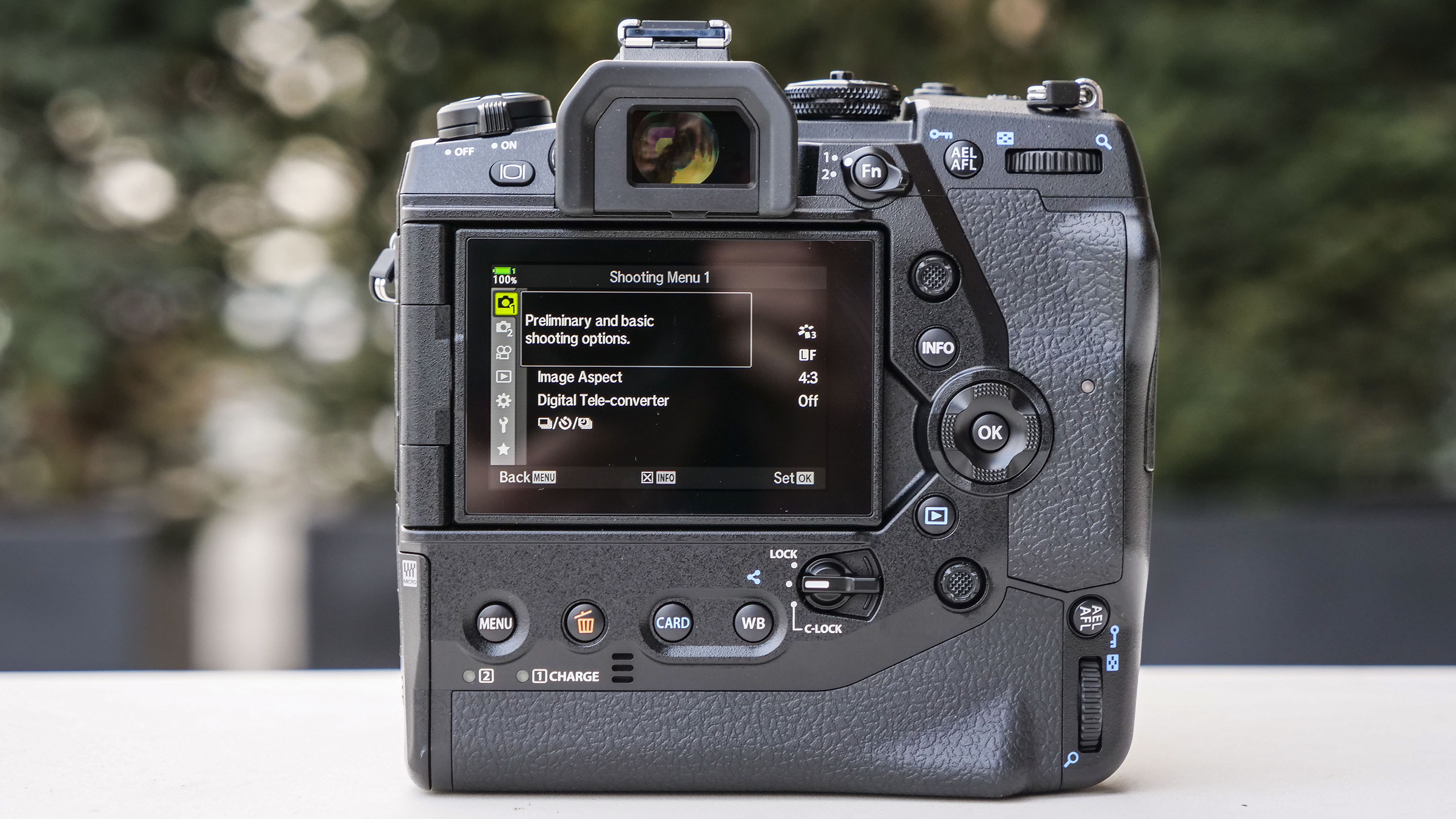
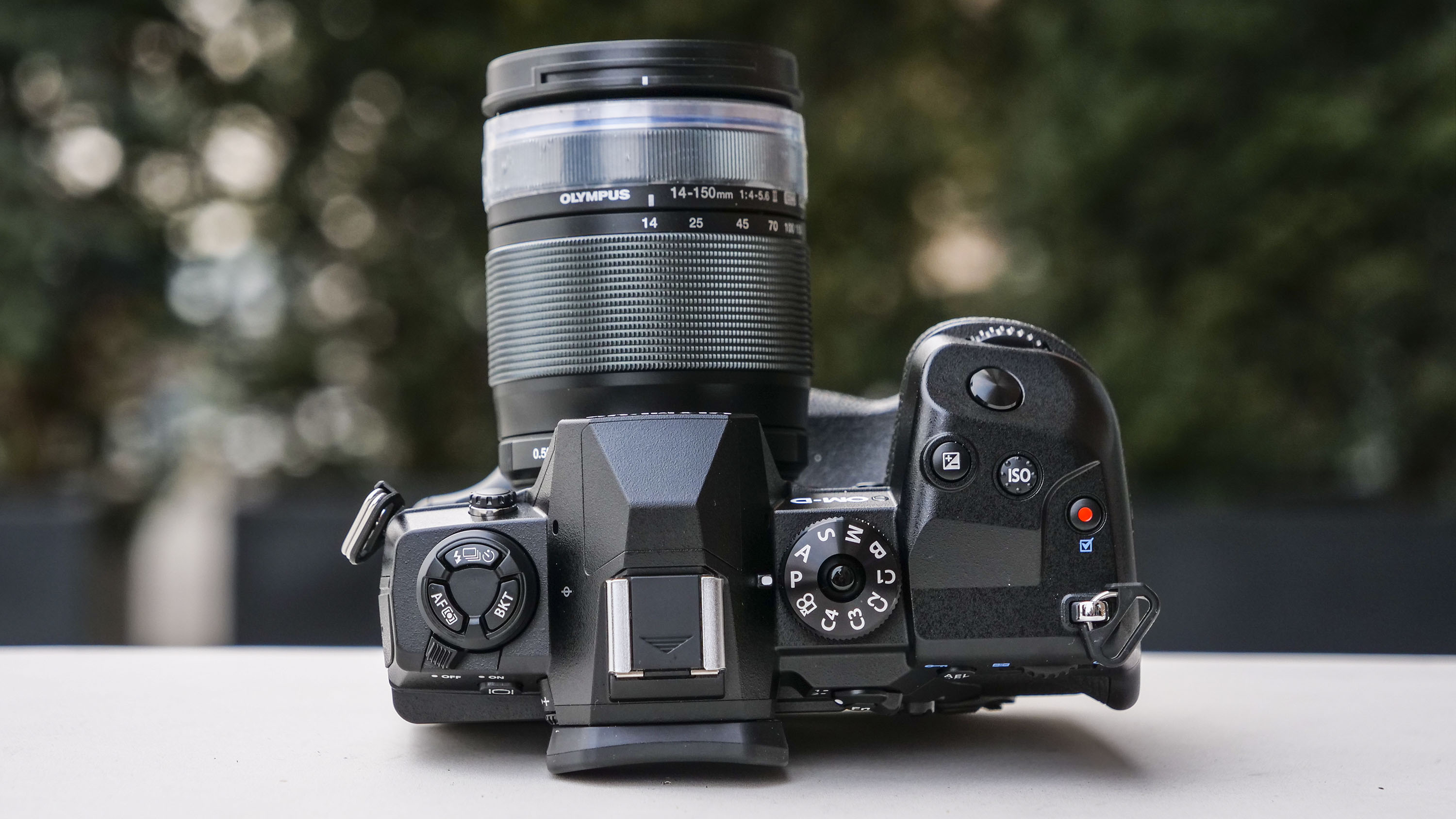
The Olympus OM-D Eastward-M1X is a technological tour de force, armed to tackle action photography in particular. For continuous shooting at 20.3MP, the mechanical and electronic shutters offer upward to 18fps and 60fps respectively, with no real limit to the sequence length. In that location's even a Pro capture mode that acquires 35 shots earlier you press the shutter, just in case your reflexes aren't quite up to scratch.
Equally with most Olympus OM-D cameras, the Due east-M1X is a joy to utilise day-to-24-hour interval, slotting in the paw perfectly. Solid as a stone, information technology is the largest and heaviest Micro Four Thirds photographic camera bachelor. It's admittedly hampered past low calorie-free image quality when compared to large format rivals, but in that location's enough of reason to choice up the Due east-M1X instead – specially for activeness photography.
Its like-for-similar lenses are significantly smaller and lighter than its rivals. Take the new 150-400mm f/4.5 TC 1.25x lens that has a maximum equivalent achieve of 1200mm – it's an incredible flake of kit, supported by arguably the well-nigh constructive photographic camera image stabilization available today, plus a new bird autofocus way. The smaller sensor format as well gives you lot greater depth of field at like-for-similar apertures, ideal at those long focal lengths. Really, it's a win-win for action photography, even if Olympus itself is in a moment of flux.
- Read our in-depth Olympus OM-D E-M1X review

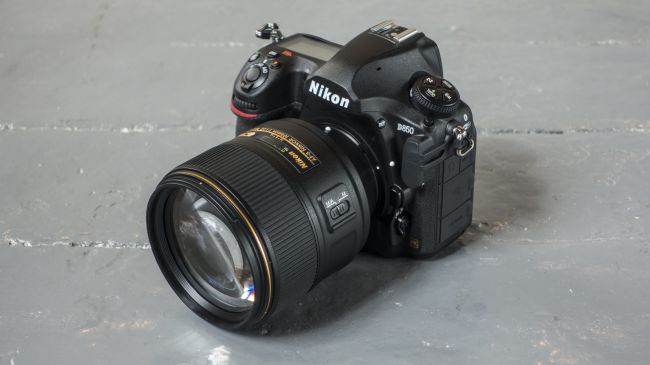
If you lot're a DSLR fan who can't quite bring yourself to buy a mirrorless camera but yet, then the Nikon D850 would be our pick. Armed with a 45.4MP sensor and course-leading paradigm quality at its base ISO 64, the D850 is particularly suitable for landscape photography. You'll also savour the proven autofocus arrangement borrowed from the action-focused Nikon D5, which will happily handle more than enervating scenarios such as weddings and even action photography, too.
Build wise, the camera is practically bomb-proof, and enjoys comprehensive weather-sealing, a meaning battery life and a wonderfully large and brilliant optical viewfinder. This is a photographic camera that you can simply rely on. When you consider the organisation every bit a whole, DSLR tech is a lot cheaper than mirrorless rivals too, with like-for-like lenses typically two thirds of the price.
The articulate drawback to a Nikon DSLR compared to mirrorless rivals is video functioning. While y'all can still shoot lovely looking 4K videos, Live View autofocus is sluggish at all-time and in that location is no in-body stabilization. Also, this isn't a true activeness photographic camera, with a 7fps continuous shooting limited to sequences around 50 shots.
- Read our in-depth Nikon D850 review

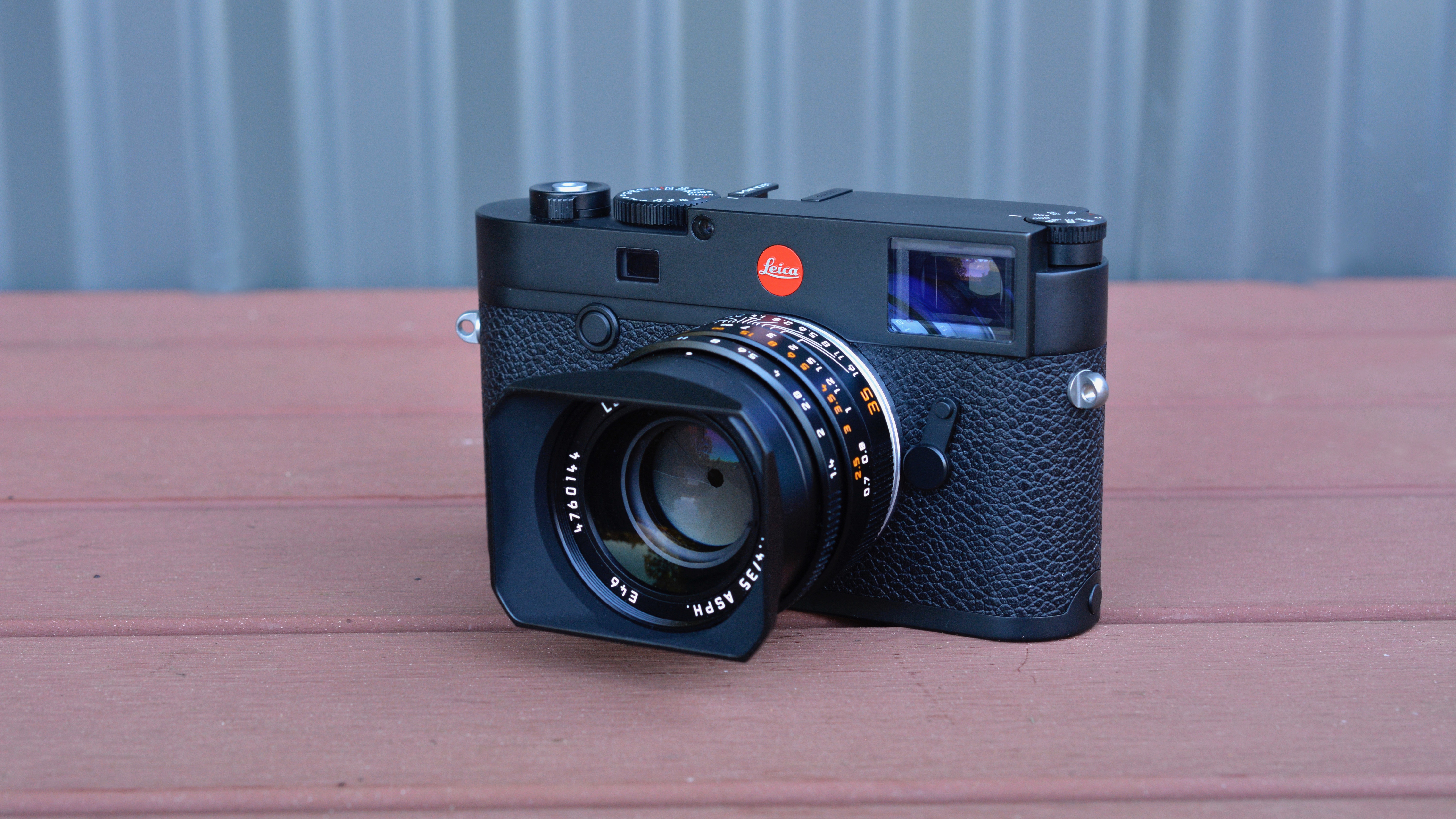
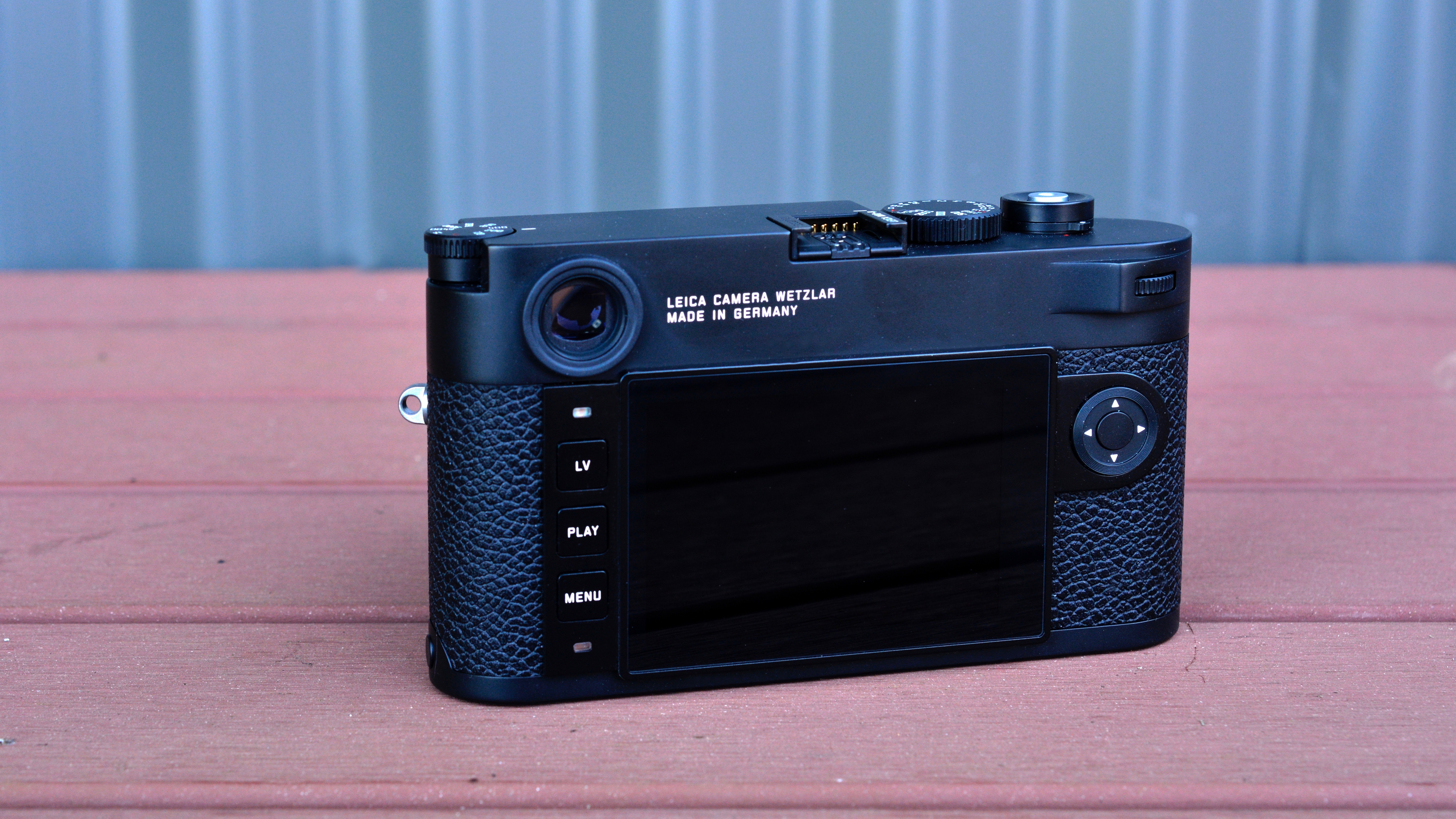
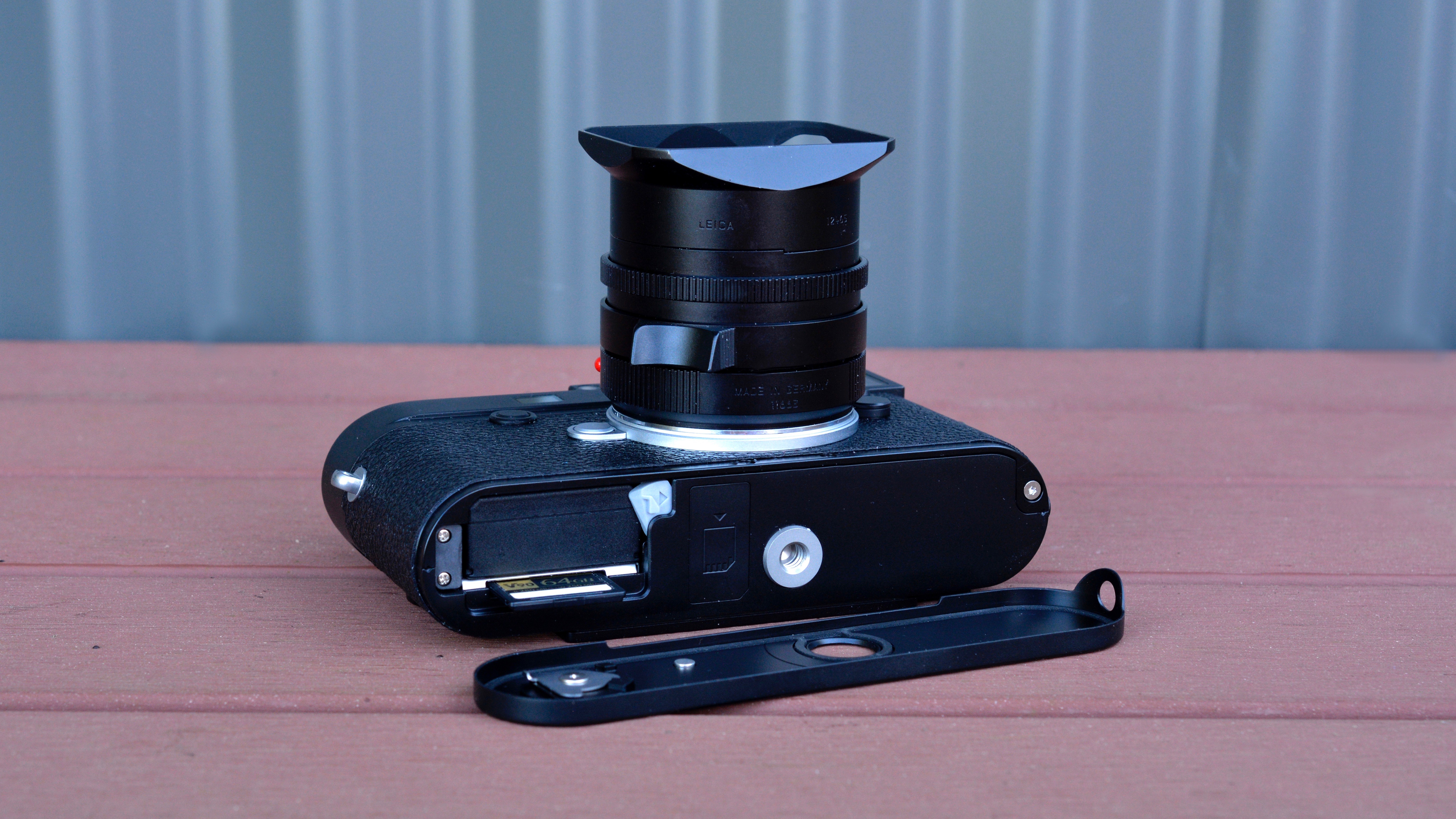
Offering a wholly different experience to about of the other cameras in this roundup, the Leica M10-R is a prestige, rangefinder-style mirrorless camera that's widely adored by reportage and street photographers. Compared to its predecessor, the M-10R enjoyed a significant crash-land in resolution, at present at a competitive 40MP. That divine Leica Yard lens quality can now be enjoyed on a larger scale.
The M10-R is also the most expensive camera hither, though it will likely retain its value. It offers double-image rangefinder manual focusing that gives all of the feels to photographers familiar with this method, in a style that no autofocus organization tin match. It may sound corny, but the experience is wonderful. This is also a stylish however discreet camera, with a virtually silent shutter that's well-suited to street scenes.
This is a stripped dorsum feel, as well. There'south no video recording, no autofocus and a uncomplicated control layout. At that place are digital touches, with a fixed touchscreen offering Live View operation and epitome playback. But actually the M10-R is the most niche camera in this roundup and you'll probably already know if it is the ane for you. The Fujifilm Ten-Pro three is a decent alternative at about a quarter of the toll.
- Read our in-depth Leica M10-R review

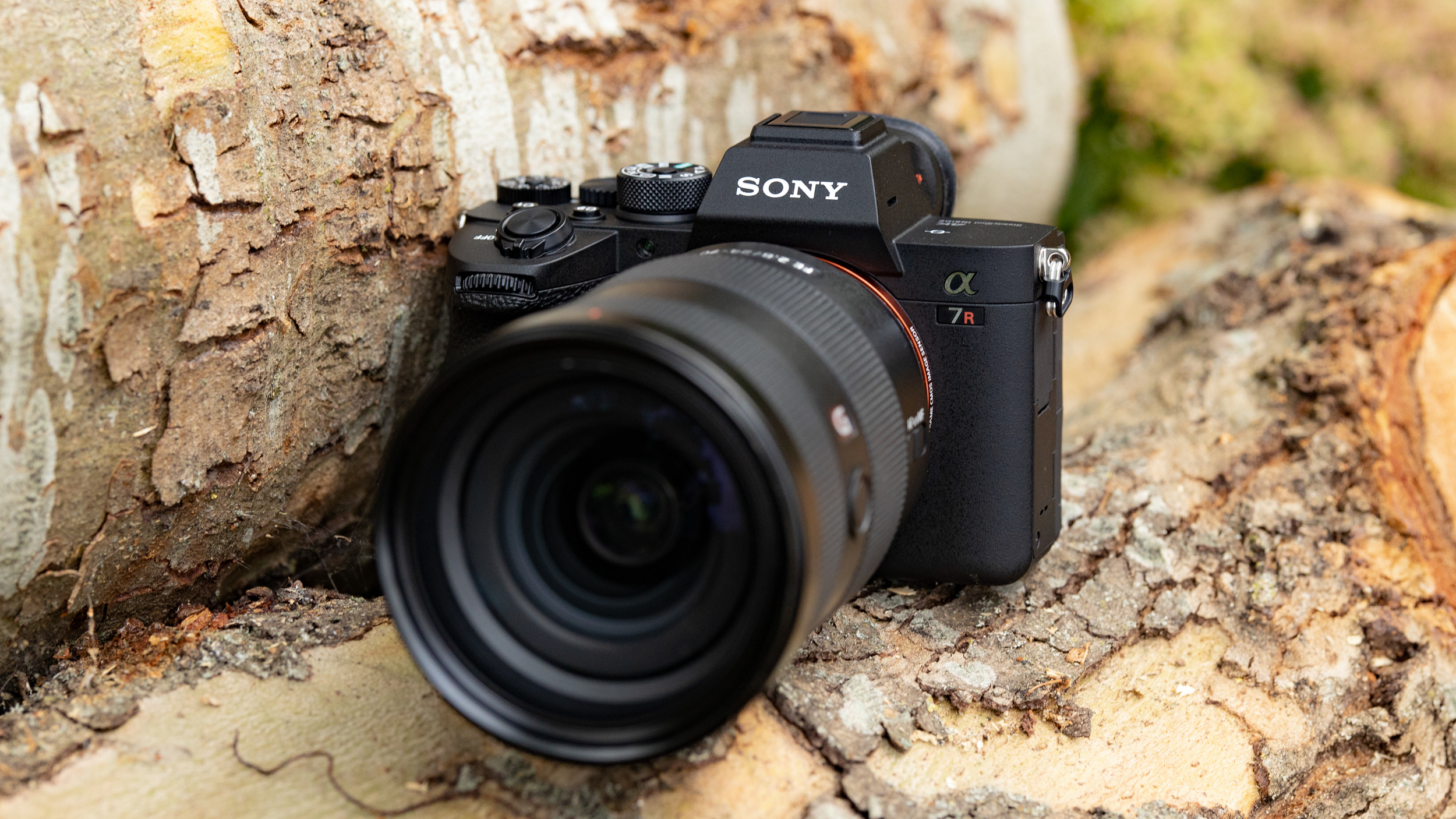
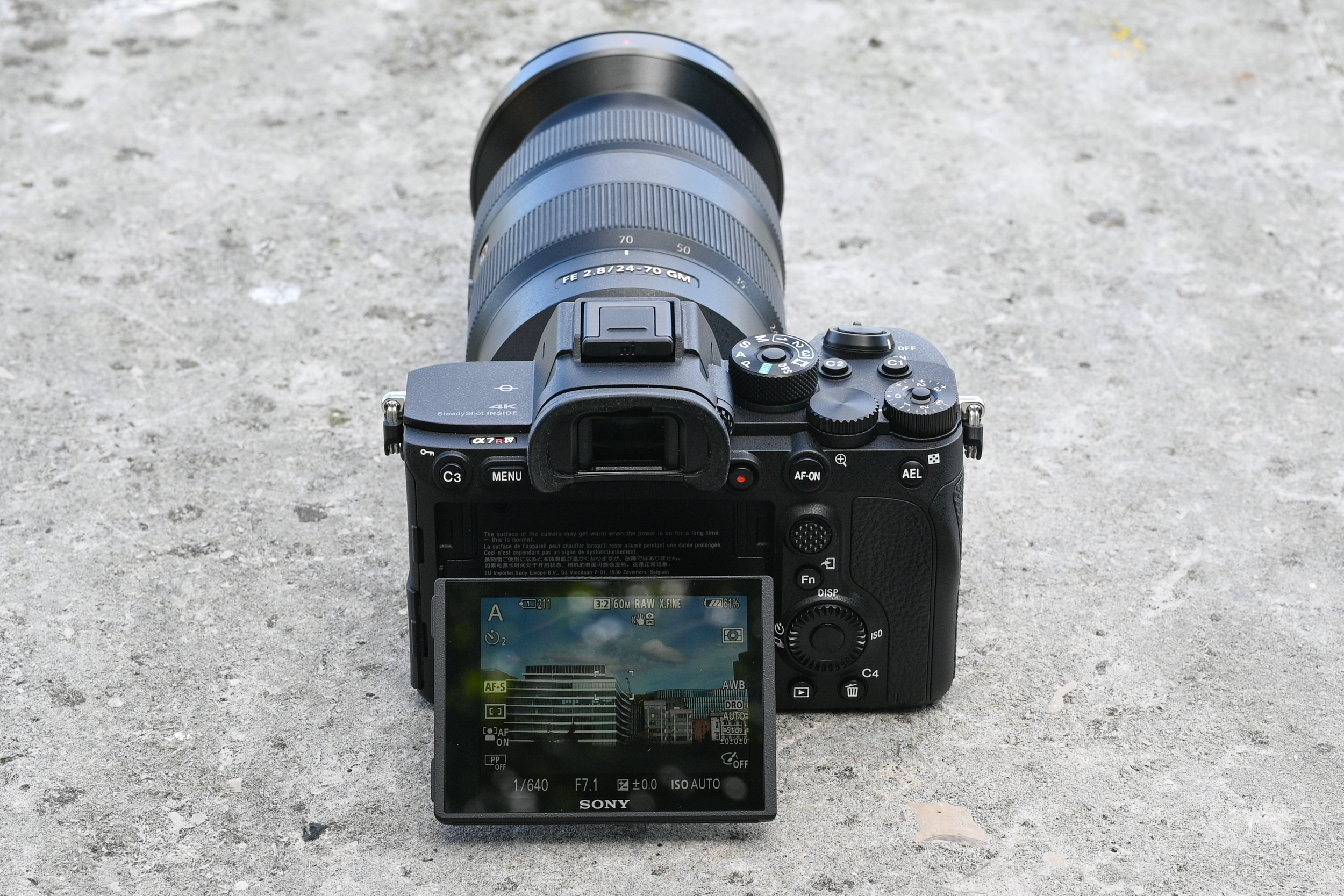
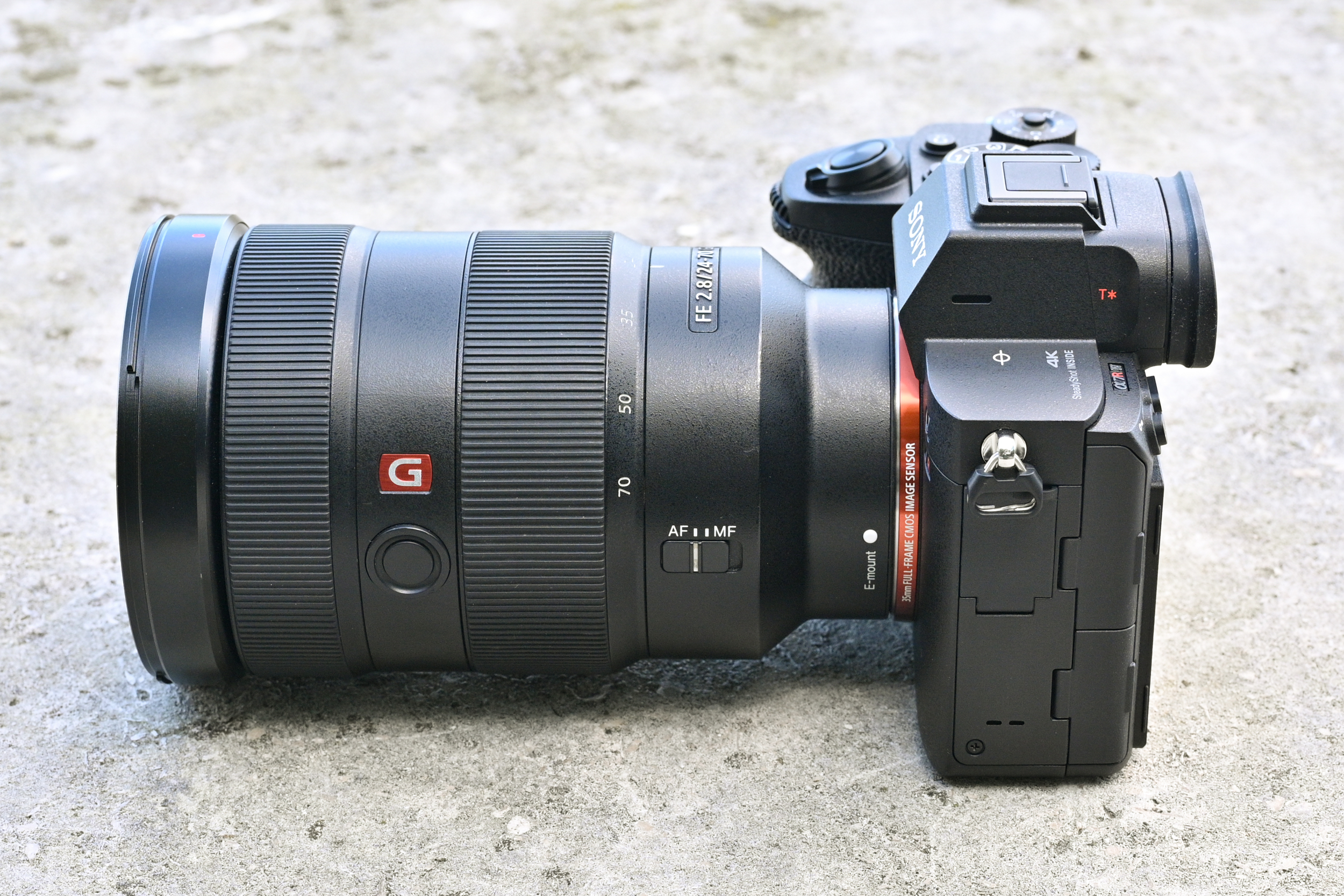
Our photographic camera of the year in 2019, the Sony A7R IV is yet a formidable photographic camera two years later. The headline-grabber was its class-leading 61MP resolution, which is still unmatched today in total-frame and holds its ain against the digital medium format. Those extra pixels support large printing and unparalleled flexibility for cropping, with the APS-C ingather way boasting a decent 26.2MP resolution.
Fifty-fifty at such a high resolution, the A7R Four has fantabulous dynamic range and can record 10fps sequences with continuous autofocus thanks to the able Bionz 10 processor, though there is a limit to the length of sequences. You've also got Sony's proven autofocus organisation and a decent in-torso image stabilization. Add the lovely 5.76-1000000 dot EVF with 120fps refresh rate and the A7R IV was what raising the bar looked like in 2019.
Video performance is good merely outsmarted past rivals today. Downsampled from 6K, the 4K videos up to 30fps enjoy a number of Sony's colour profiles. Lens pick is wide, with the recently launched Sony FE 50mm f/ane.2 G lens becoming the 60th native lens in the arrangement (and soon followed by three more primes). For years now Sony has been an innovator in camera tech, and the real-world functioning largely backs upwardly the numbers.
- Read our in-depth Sony A7R IV review

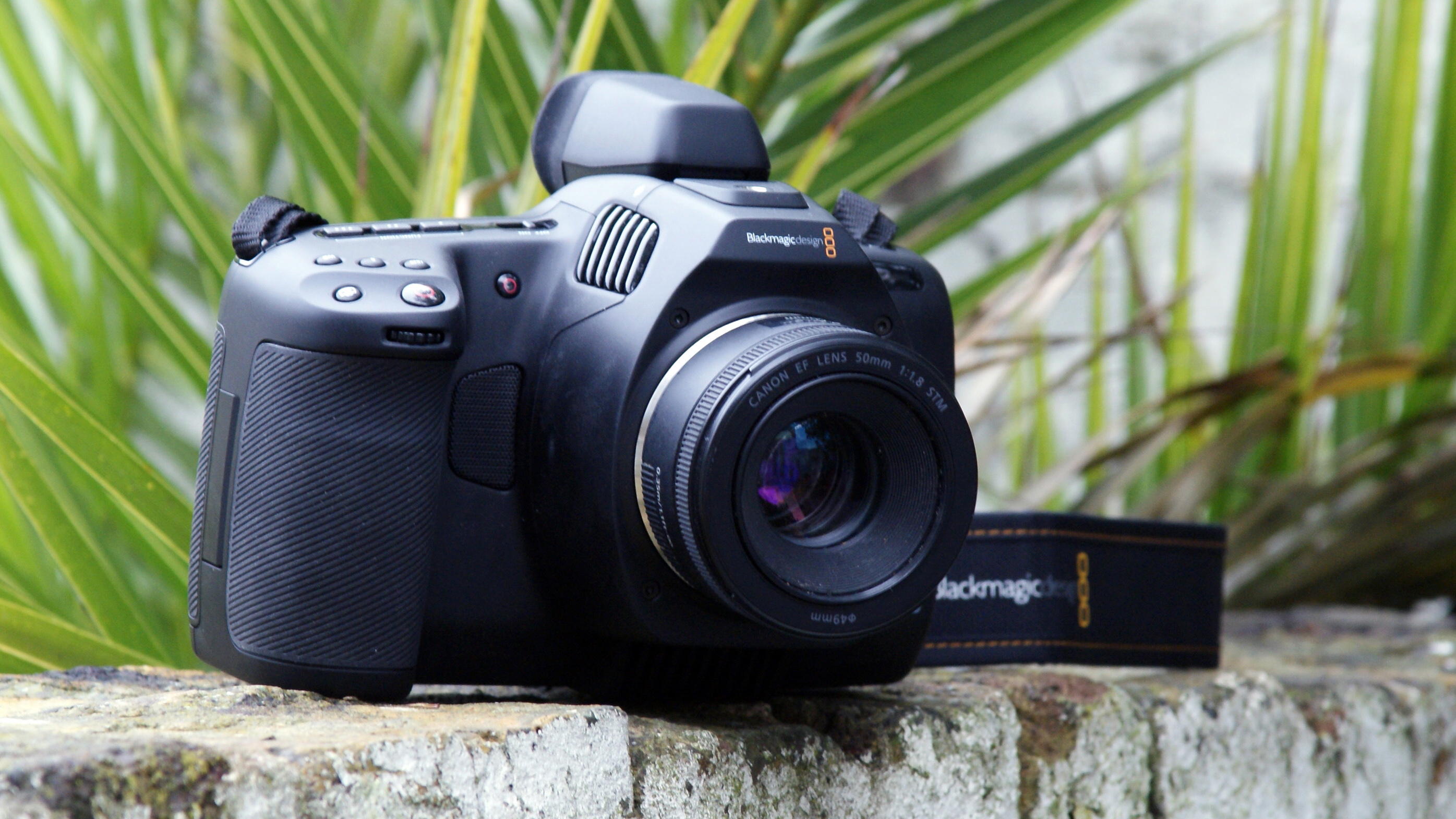
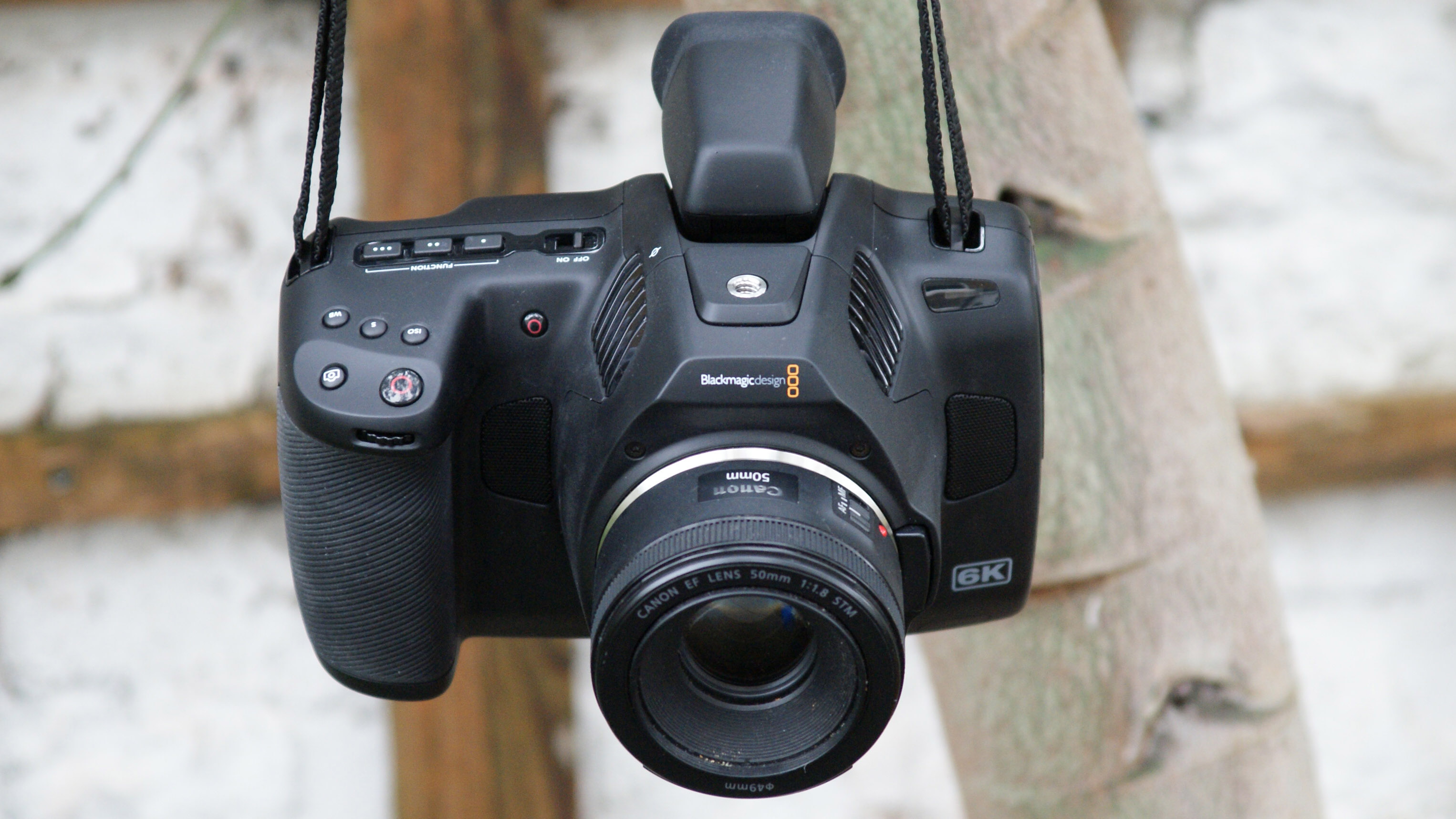
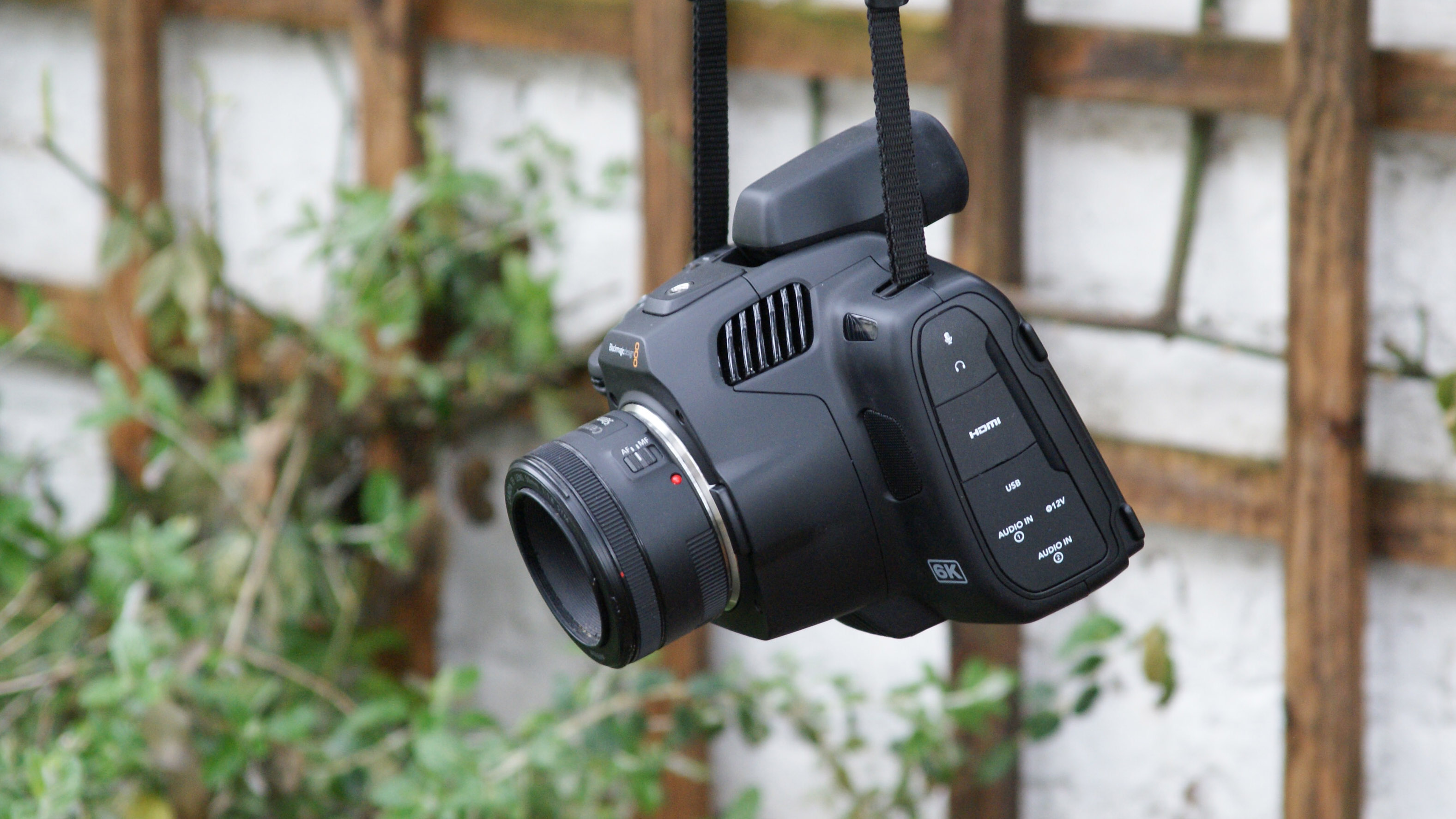
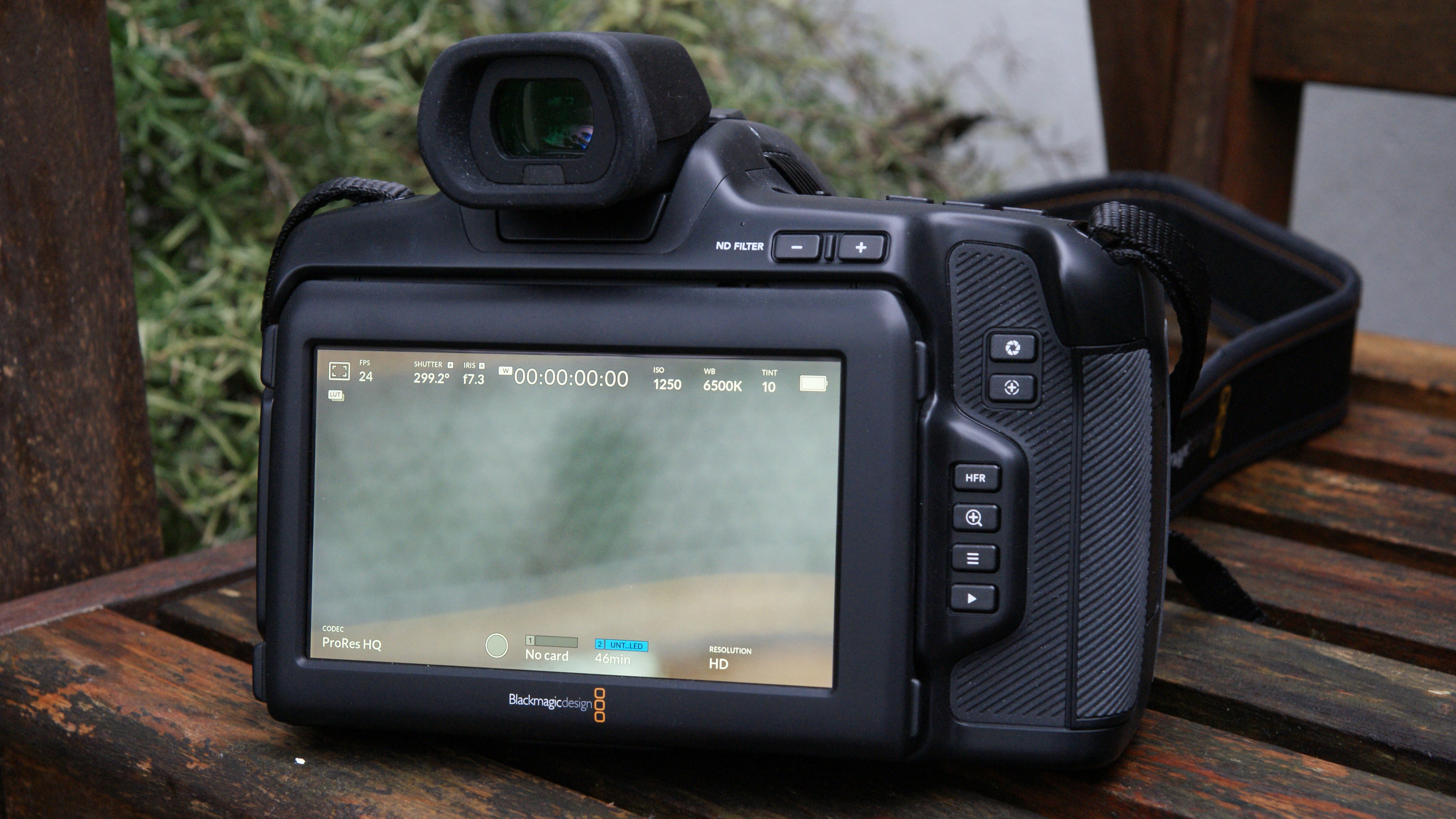
The Blackmagic Pocket Cinema Camera 6K Pro is merely about the most affordable manner to shoot delicious 6K videos. By focusing on video – there's no real photograph capability with this camera – the 6K Pro offers video smarts not available with whatever other camera here, such as congenital-in ND filters.
Users can enjoy the Blackmagic RAW and ProRes codecs, stunning preset LUTs, all edited in Blackmagic'southward own DaVinci Resolve Studio software included with the camera. The Super 35 sensor is a piddling smaller than full-frame, but the 6K Pro is still a capable depression-low-cal shooter, too, with dual native ISO 400/three,200. At that place's the Canon EF lens mount, significant a swell choice of lenses.
If yous are moving from photography to video, there will be some acclimatization with a number of treatment quirks in the 6K Pro, while its EVF is an expensive optional extra. Build quality is passable – we're looking at a plastic build rather than metal, plus there'south no image stabilization. While we're on build, this is actually quite a chunky camera. But if 6K video image quality is your prime business organisation, at that place's no better blindside for your buck.
- Read our in-depth Blackmagic Pocket Cinema Camera 6K Pro review

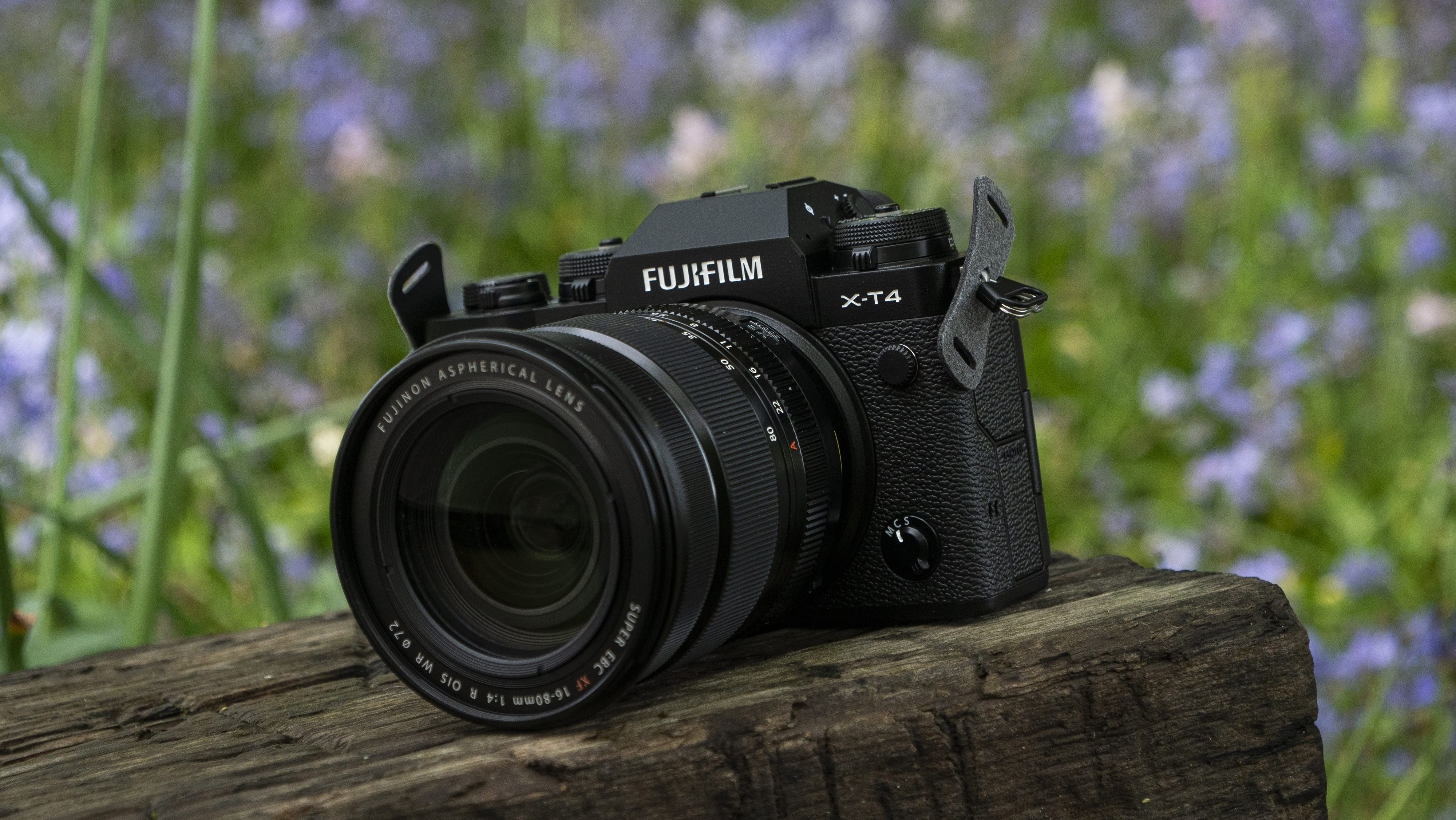
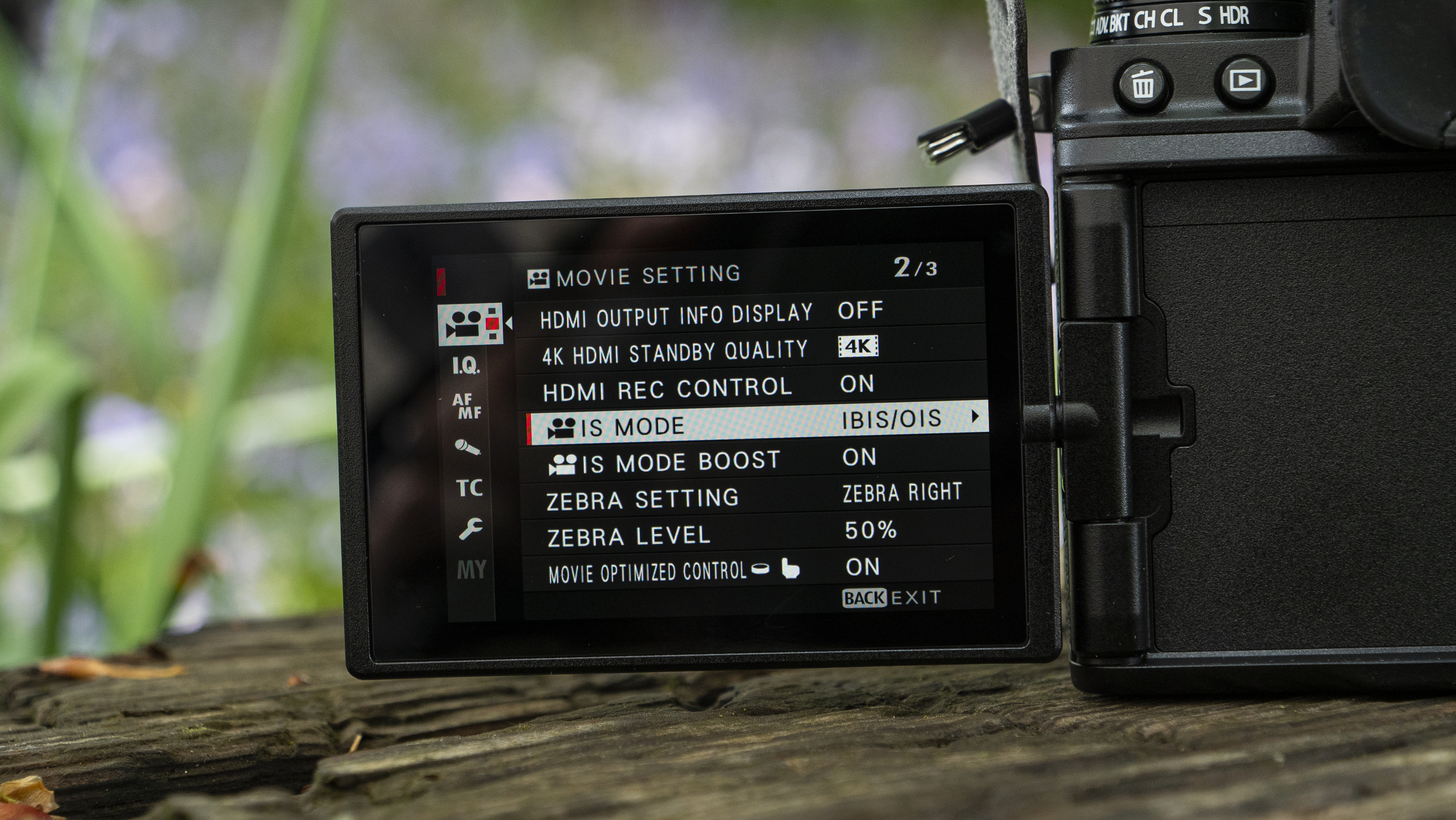
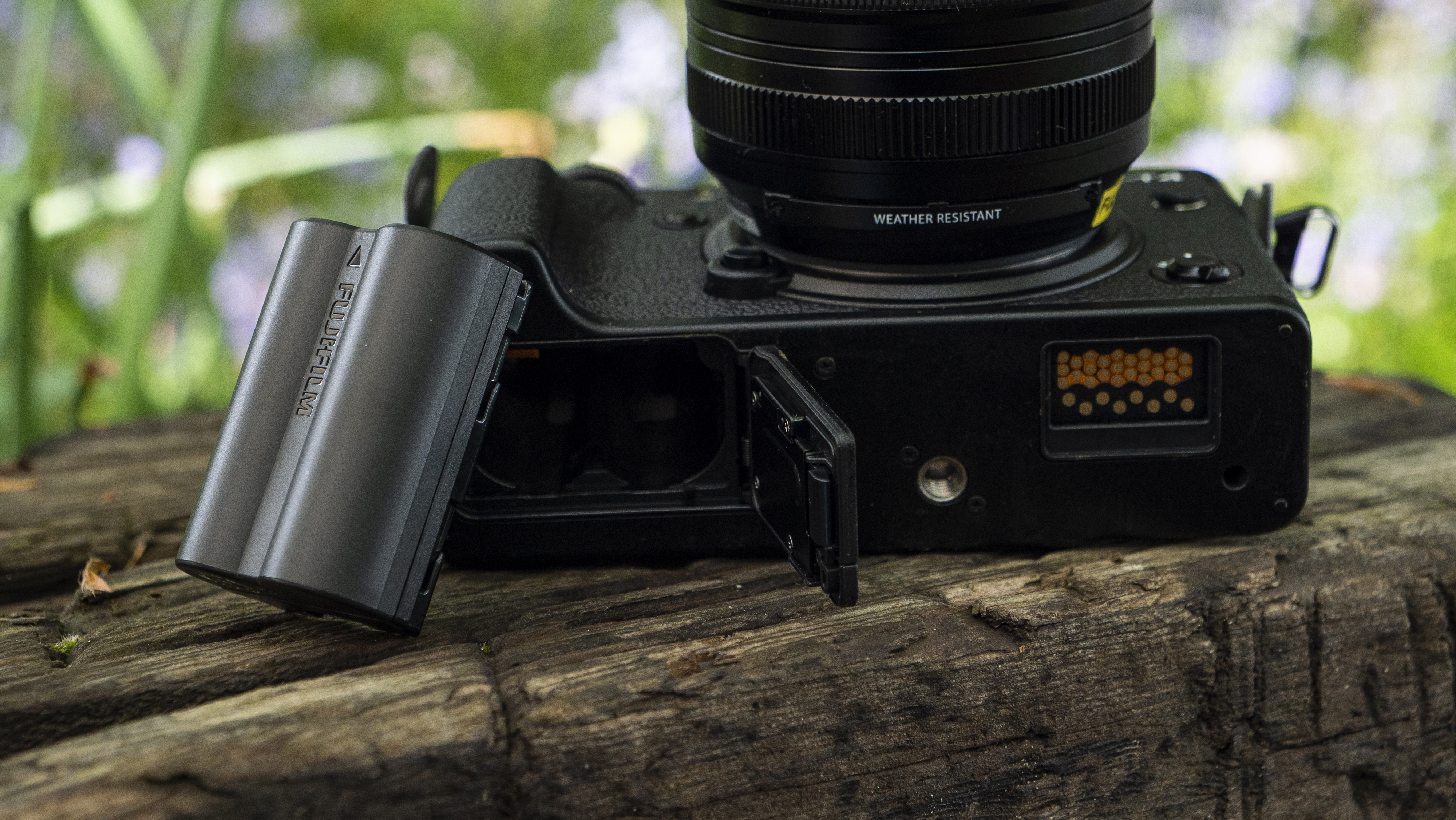
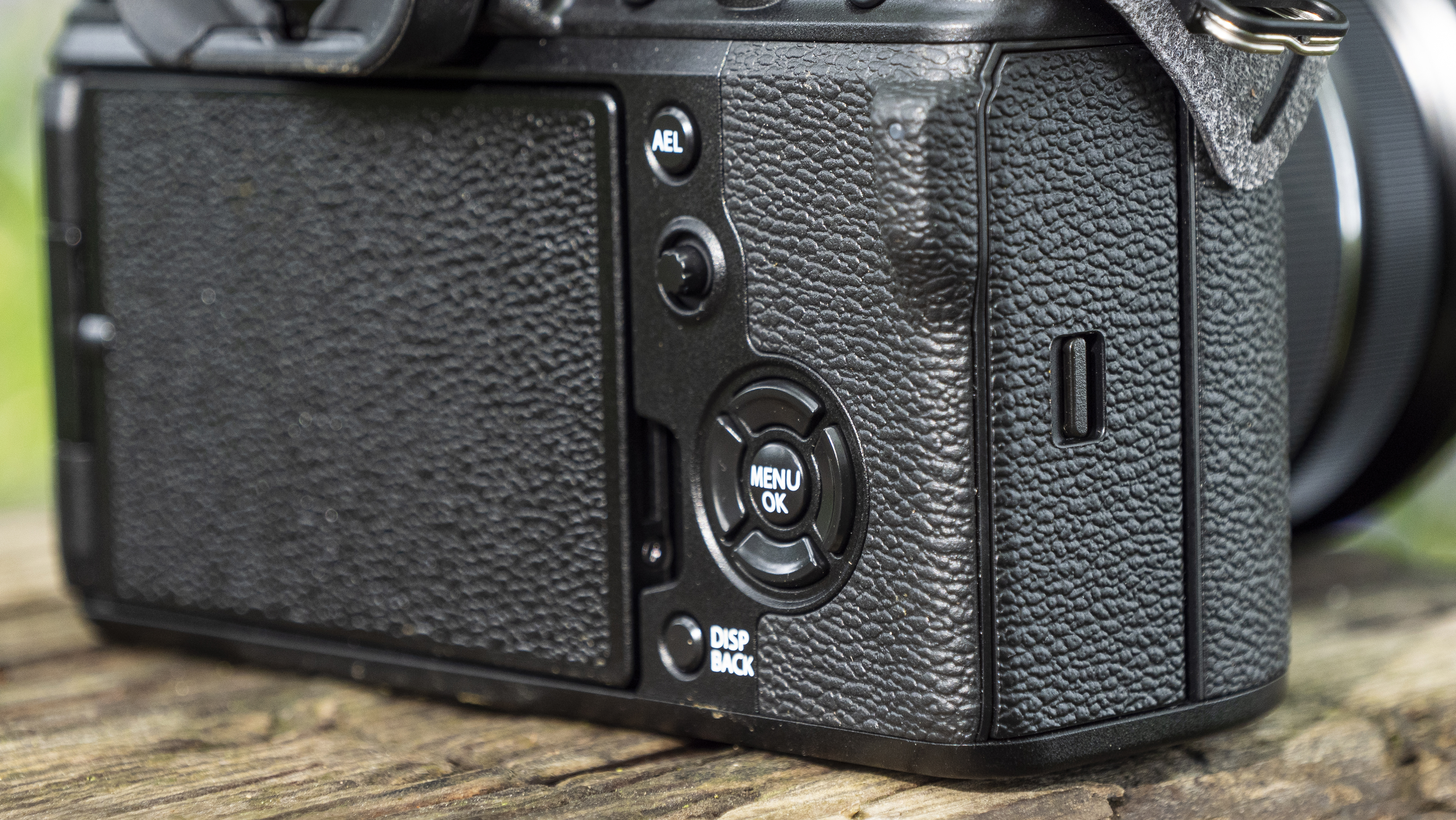
Do pros really, really need full-frame or medium format? We don't think so and the stylish Fujfilm X-T4 is the best APS-C format mirrorless camera available today. On the outside it's all retro dials and analogue chic, but inside is Fujfilm's best tech. A truthful photograph-video hybrid, at the picture of a switch the control layout, performance and menus of the X-T4 tin motion between dedicated setups for 26.1MP stills and 4K videos (10-flake up to 60fps with F-Log profile).
For ultimate handling we'd like a bigger handgrip and the omission of a headphone jack seems foreign because that the Ten-T4 is a hybrid camera (even if you tin can add together ane via an adaptor). Stabilization and autofocus performance is impacted by the lens attached to the camera, with some older lenses not quite as effective equally others. But otherwise, there'south very little to pick autonomously.
Nosotros exam cameras from all brands, and the 10-T4 is up there as the most immediately enjoyable camera to apply. It volition also stand the test of time with its solid and attractive build, competitive battery life, new in-body stabilization and a flip-out screen with full touch functioning. Existence role of the 10-Series, at that place are some delicious lenses to choose from, likewise.
- Read our in-depth Fujifilm Ten-T4 review

Five things to look for when choosing a professional camera
- Best DSLR camera: 12 of the best DSLR cameras for all budgets
Source: https://www.techradar.com/best/best-professional-camera
Posted by: domingonathe1986.blogspot.com


0 Response to "Which Camera Do Most Pro Fashion Photographers Use"
Post a Comment